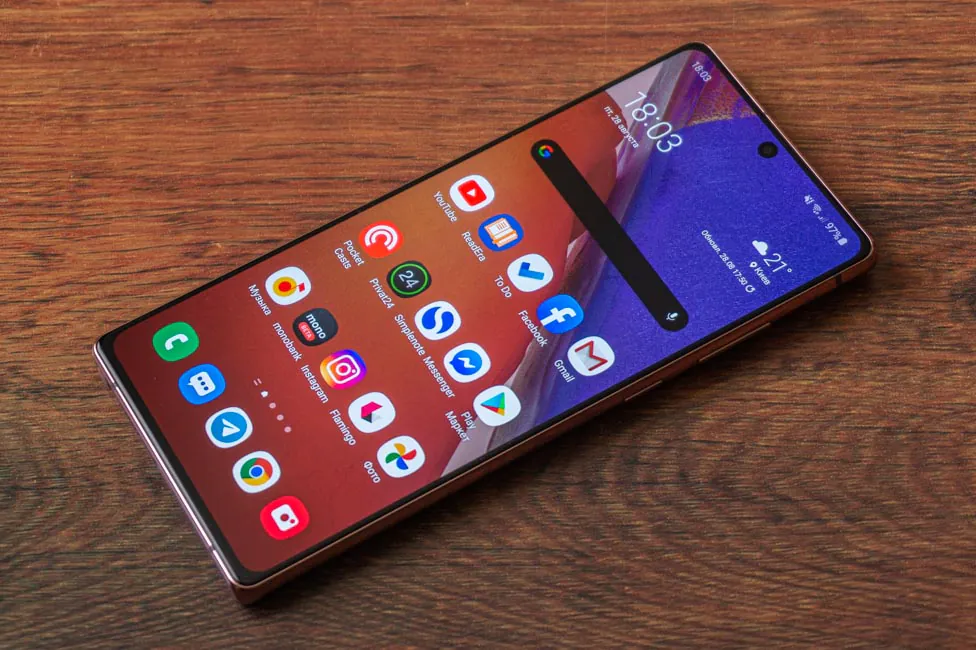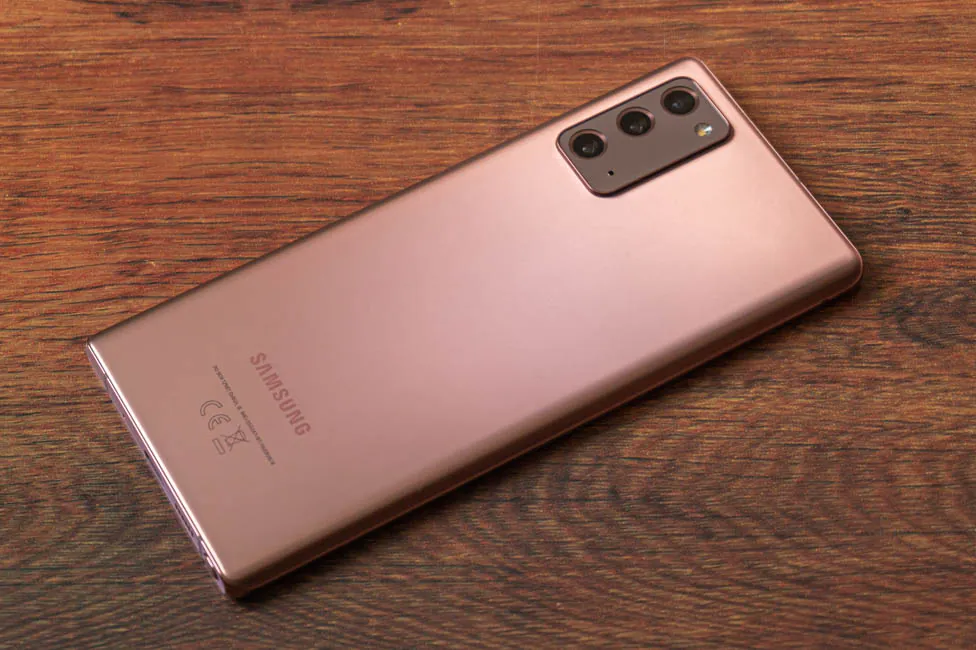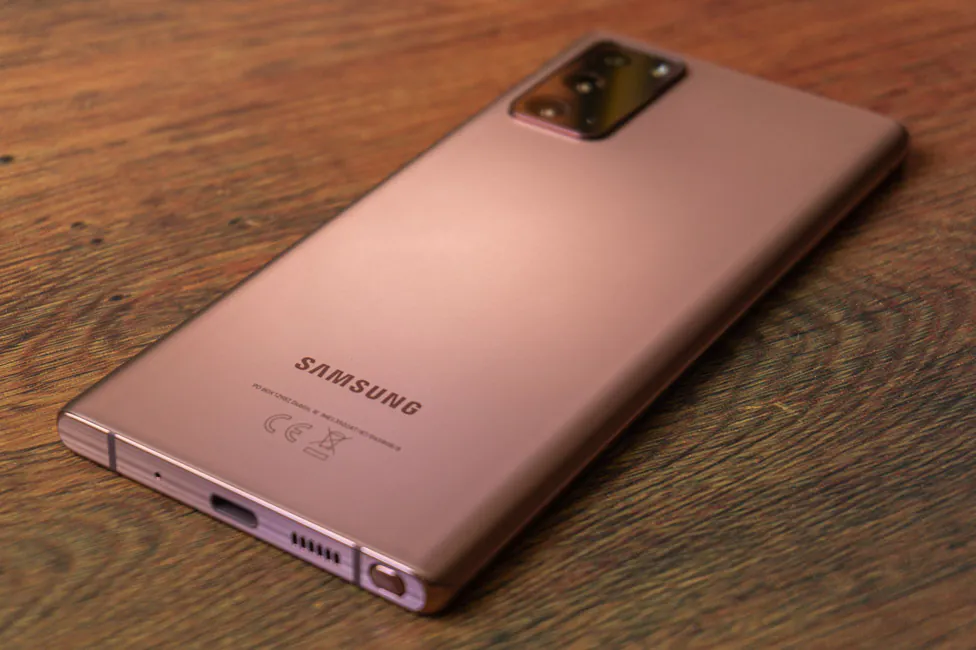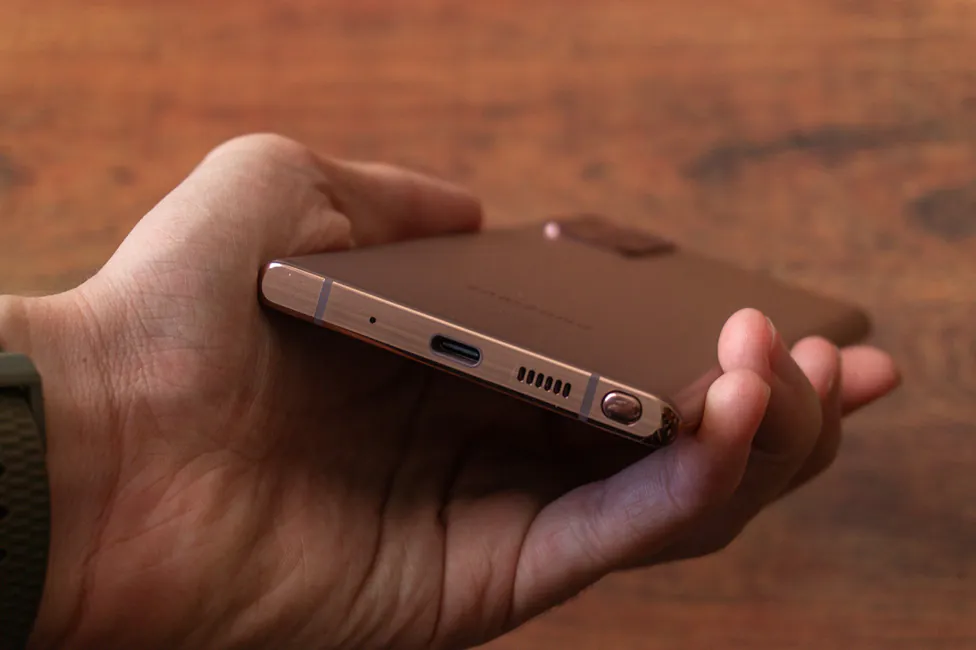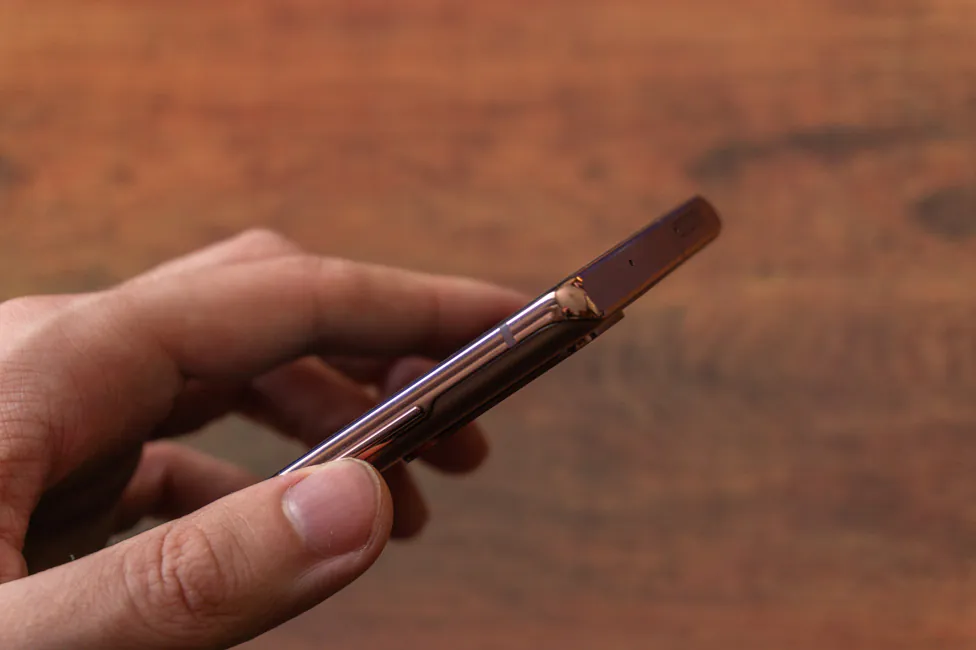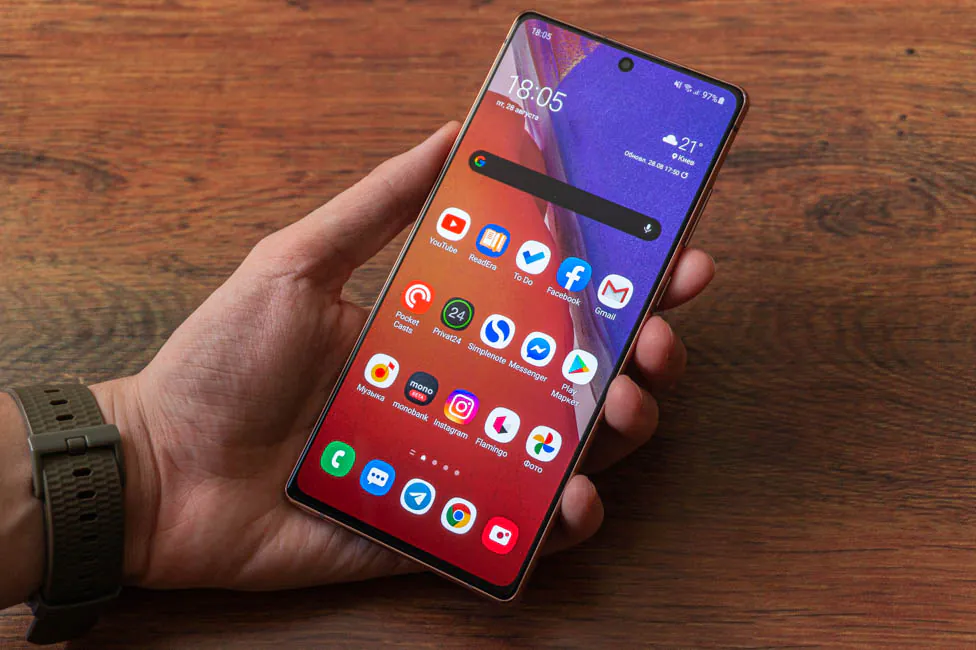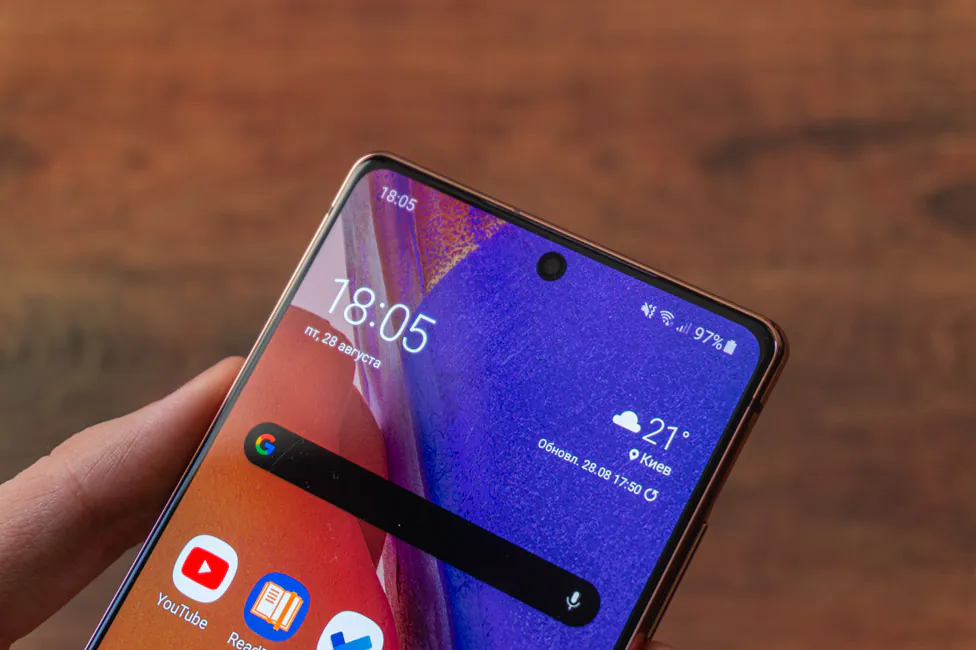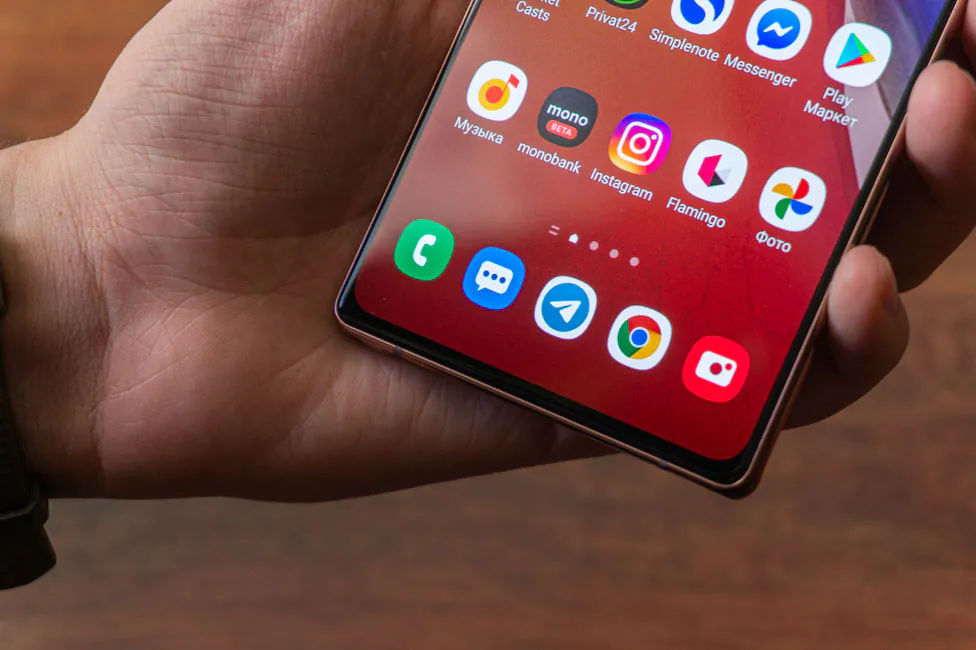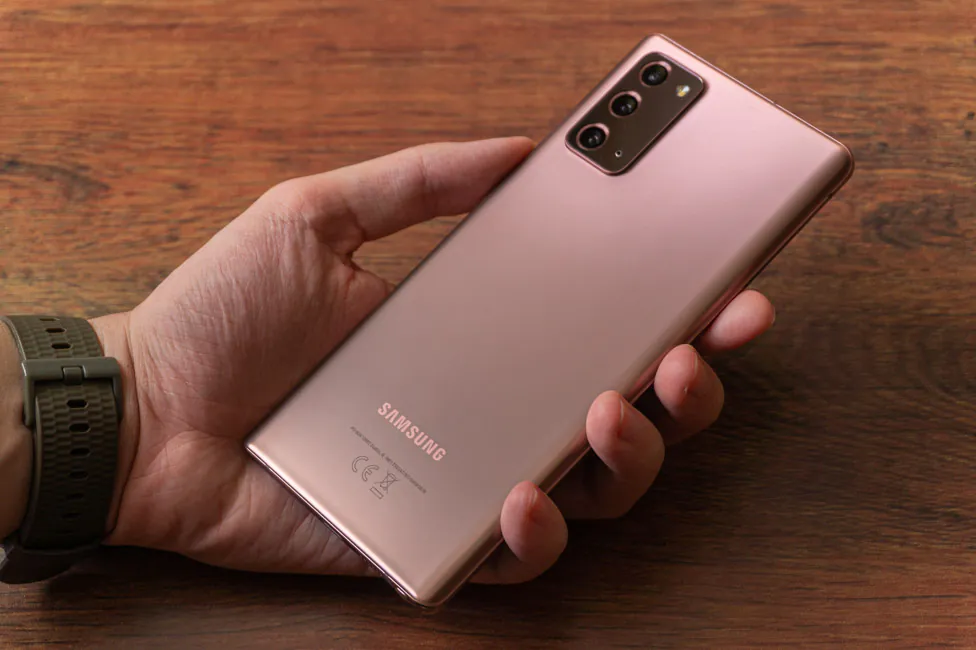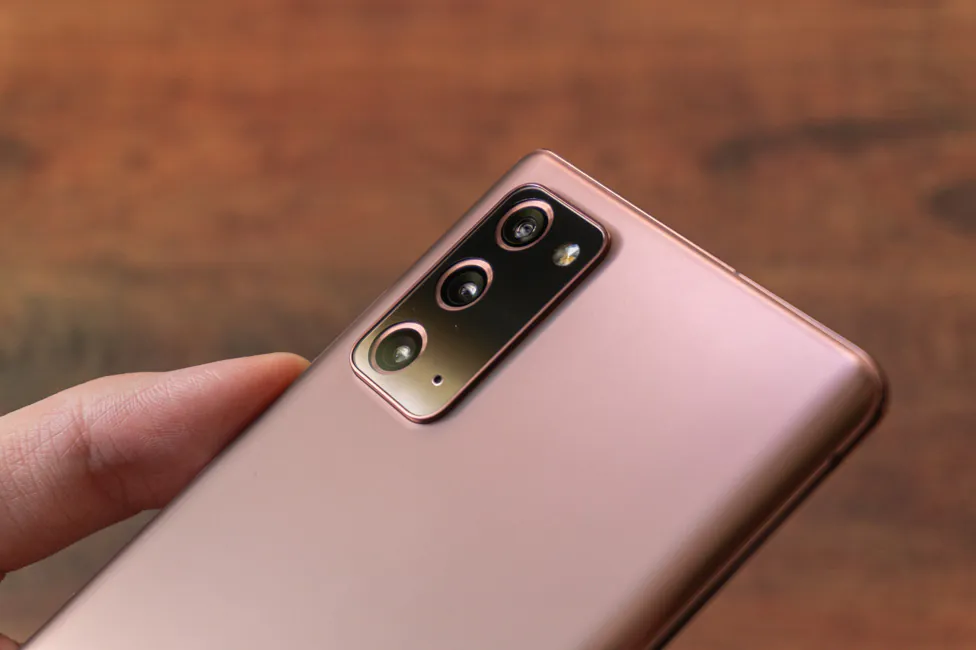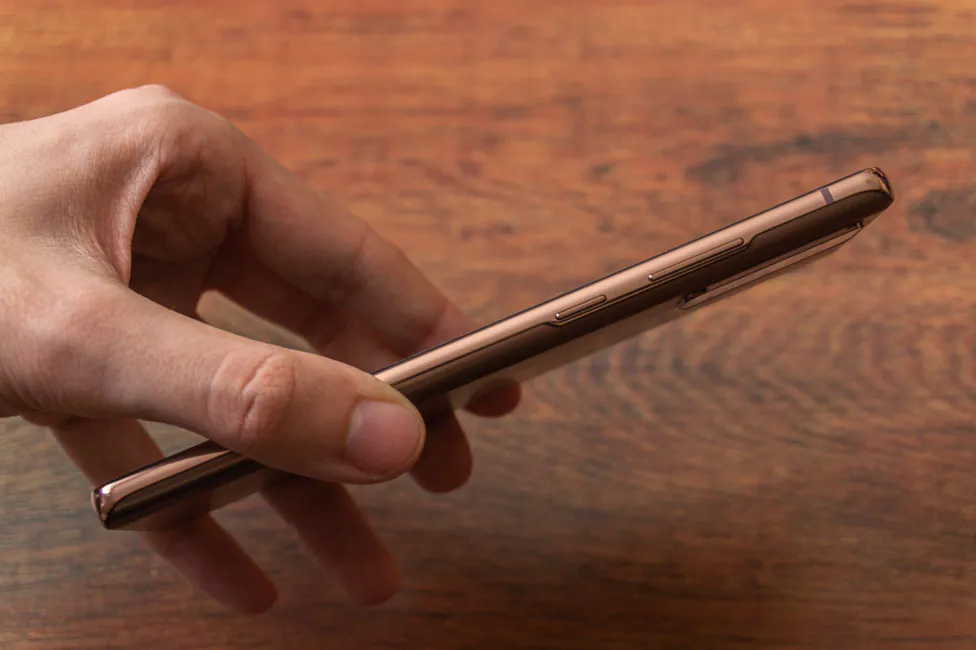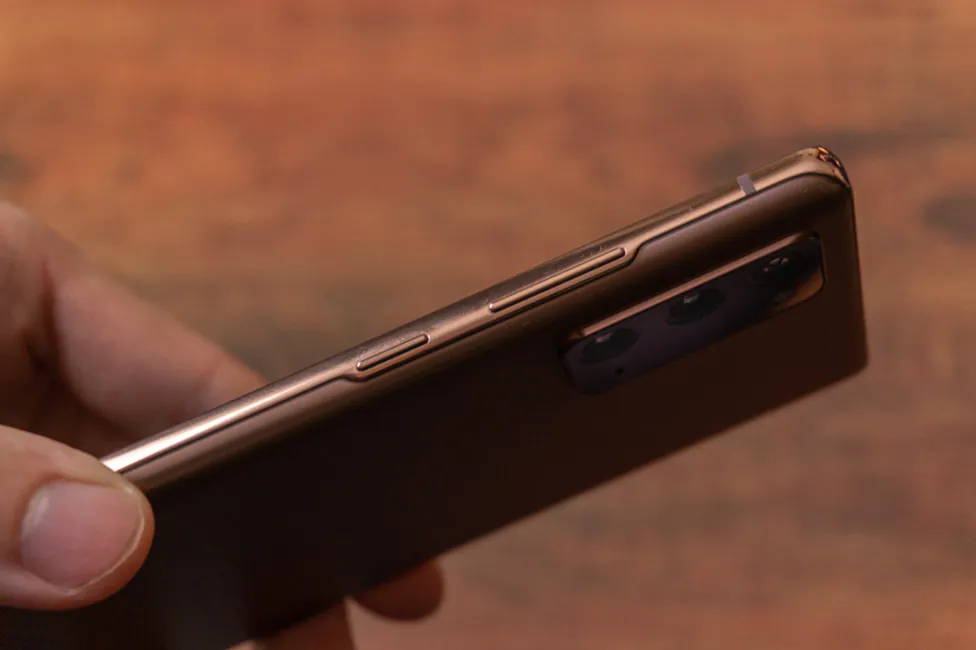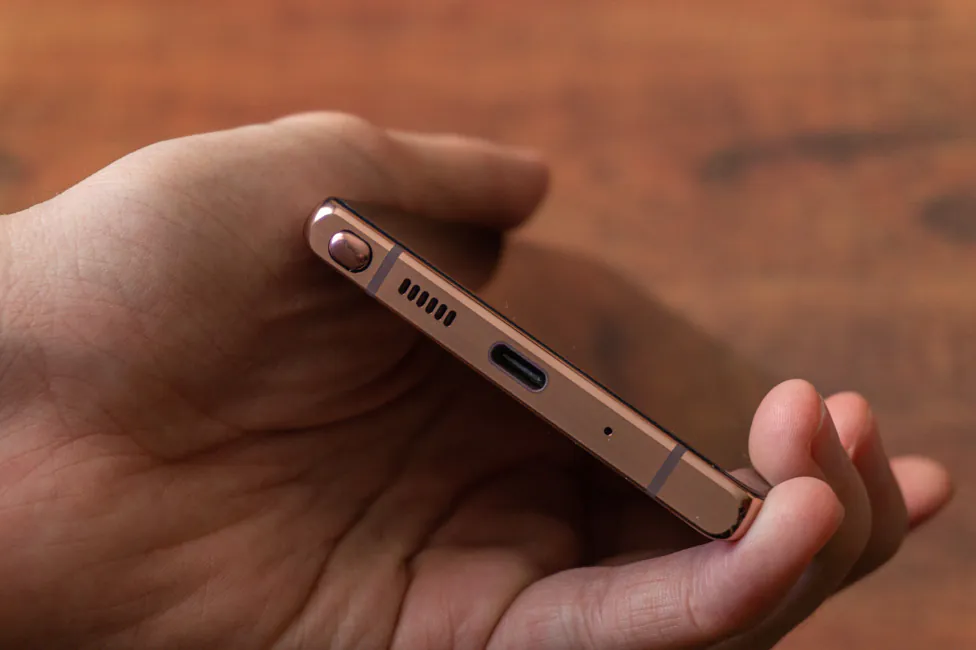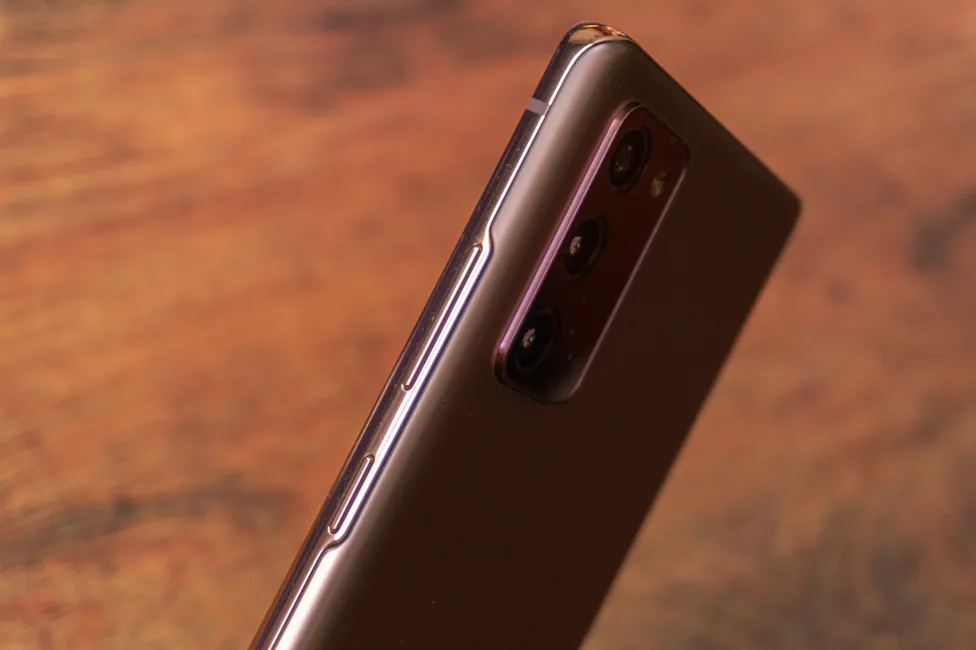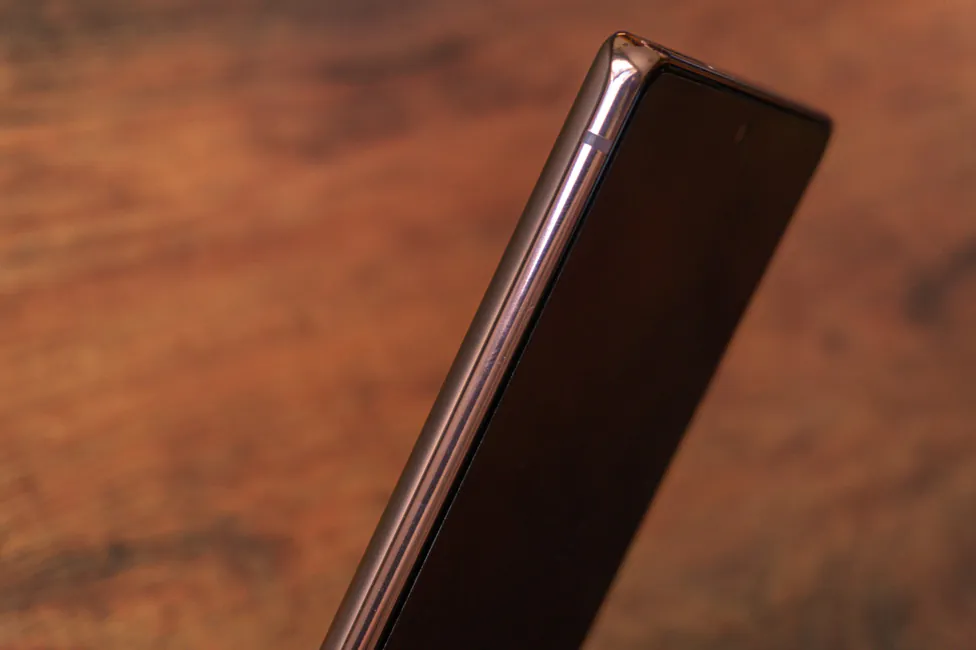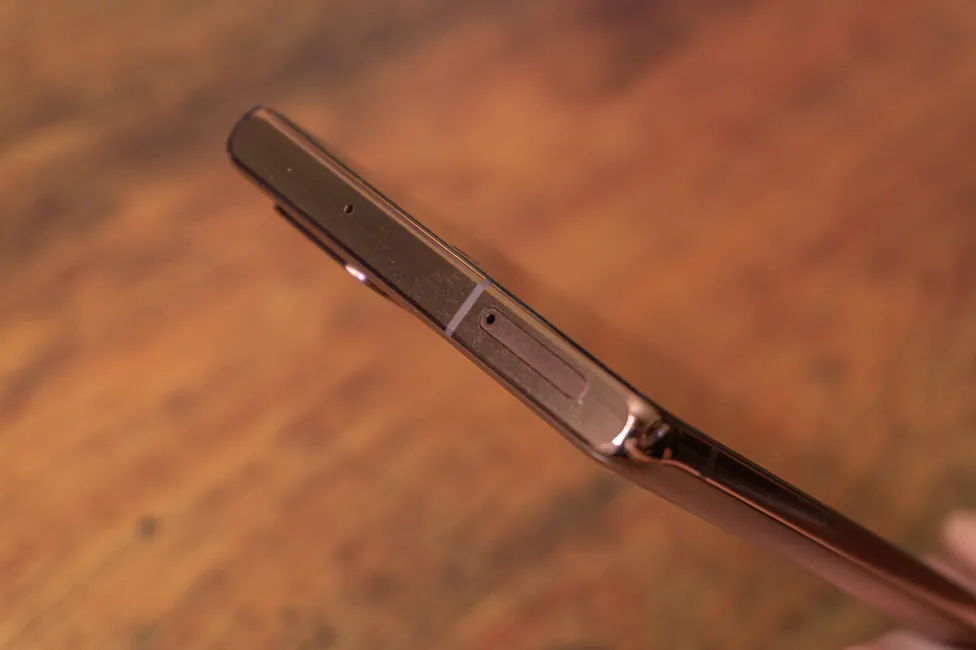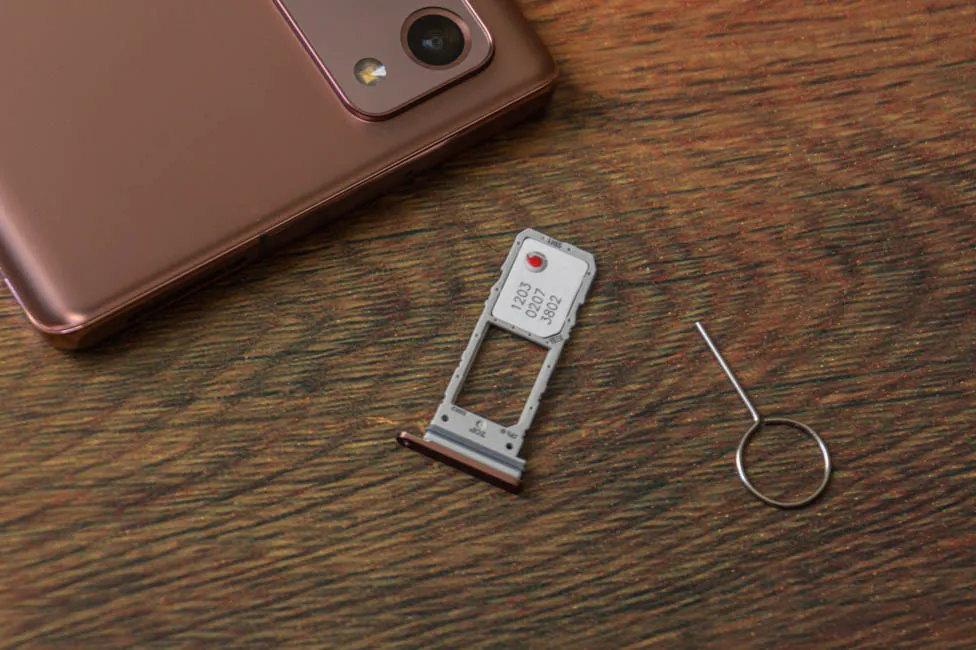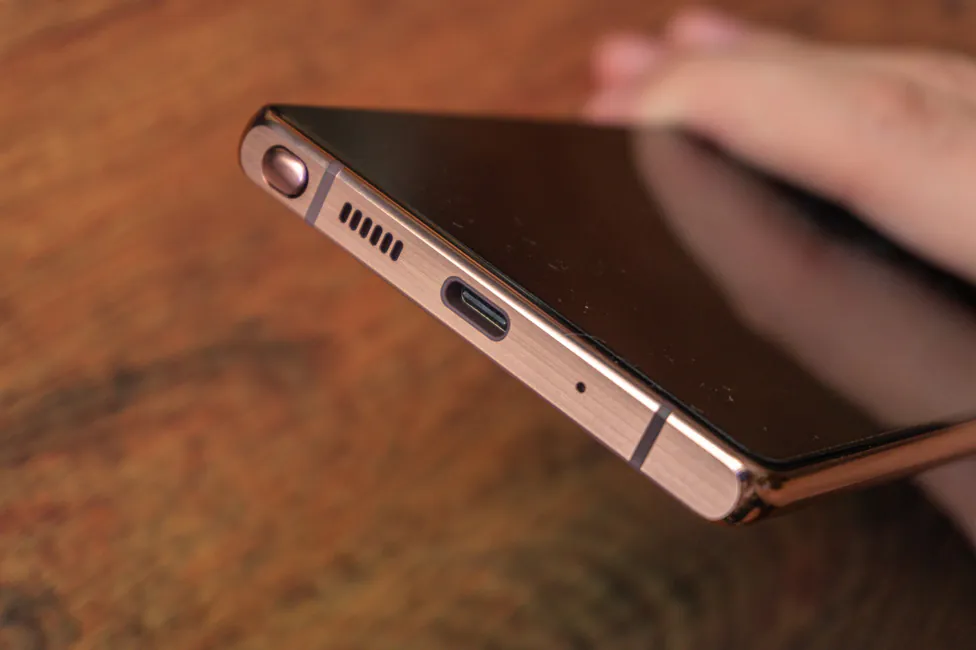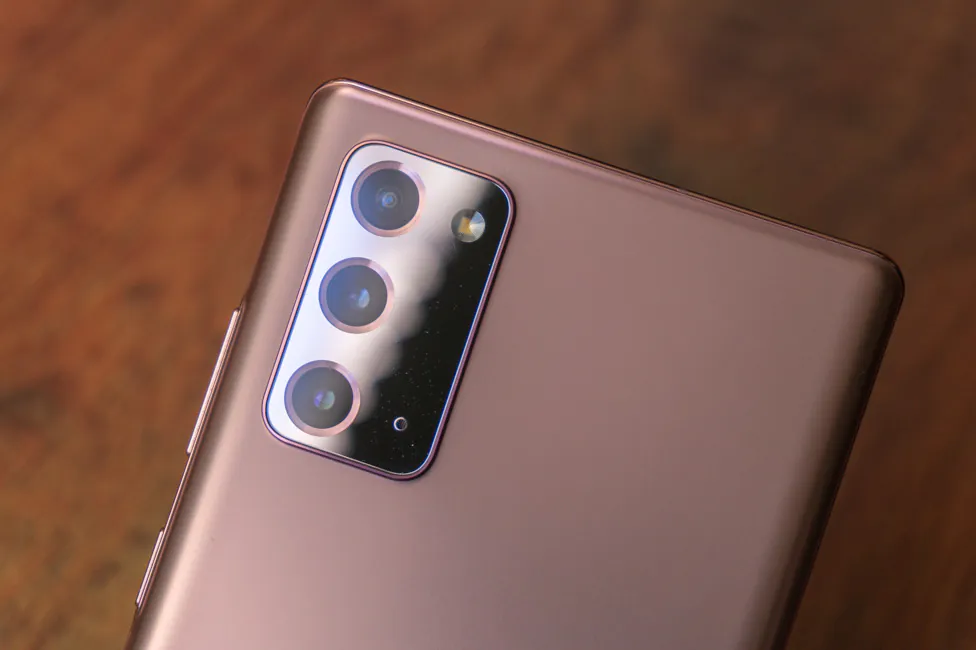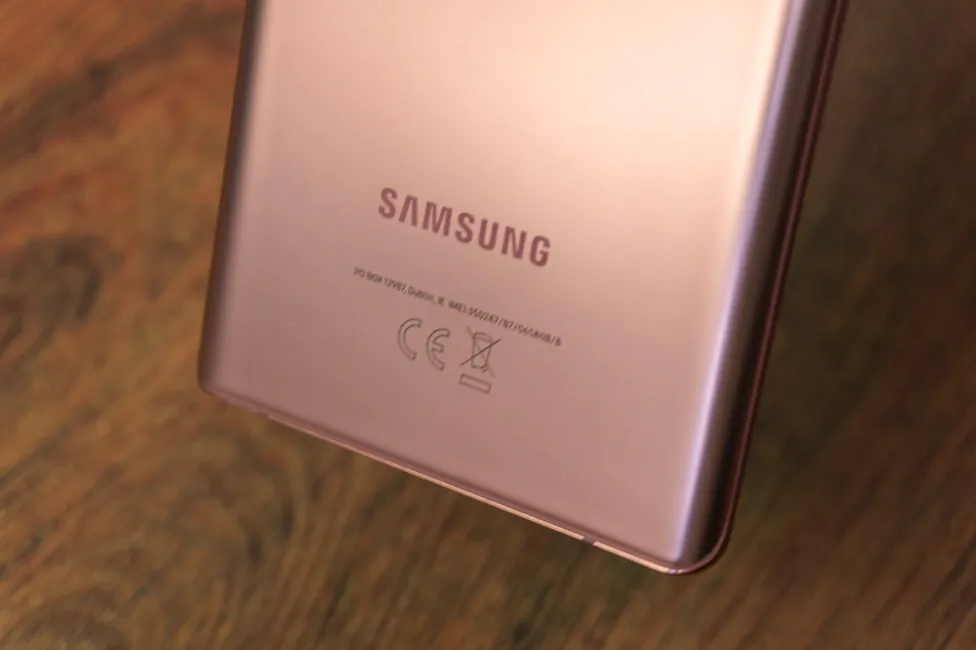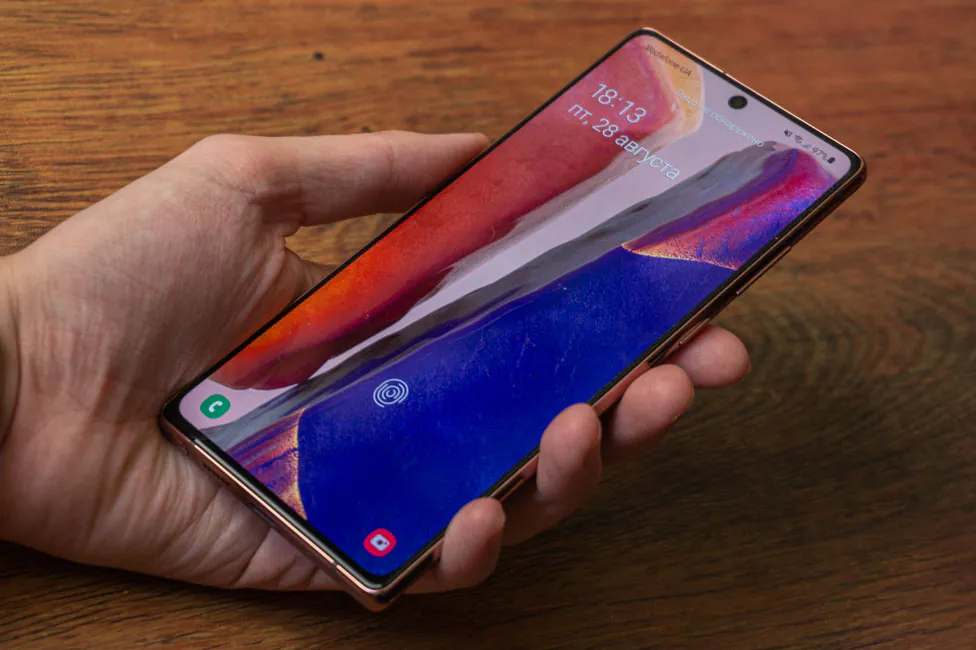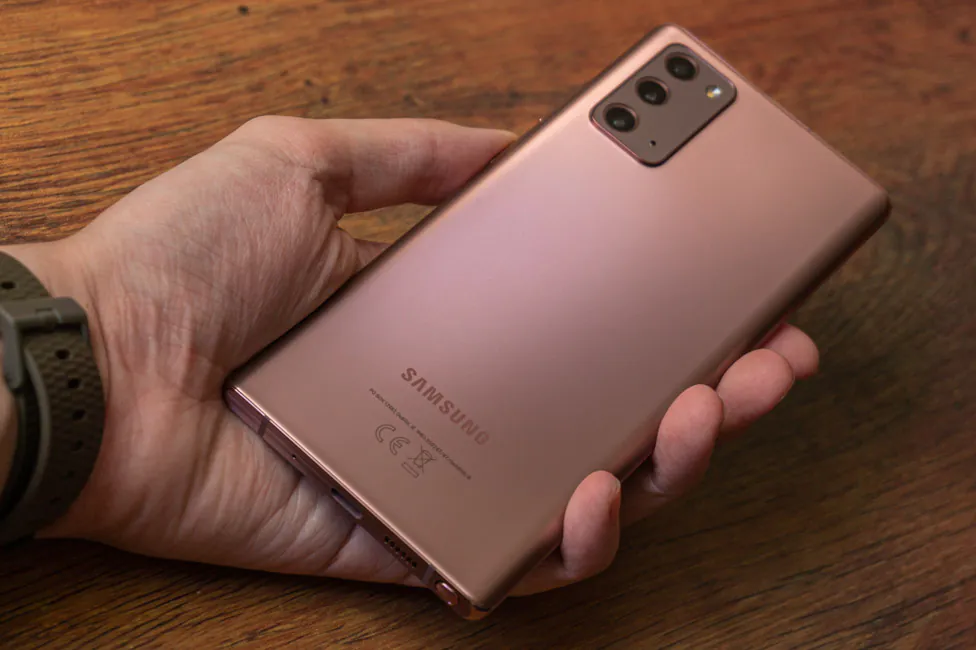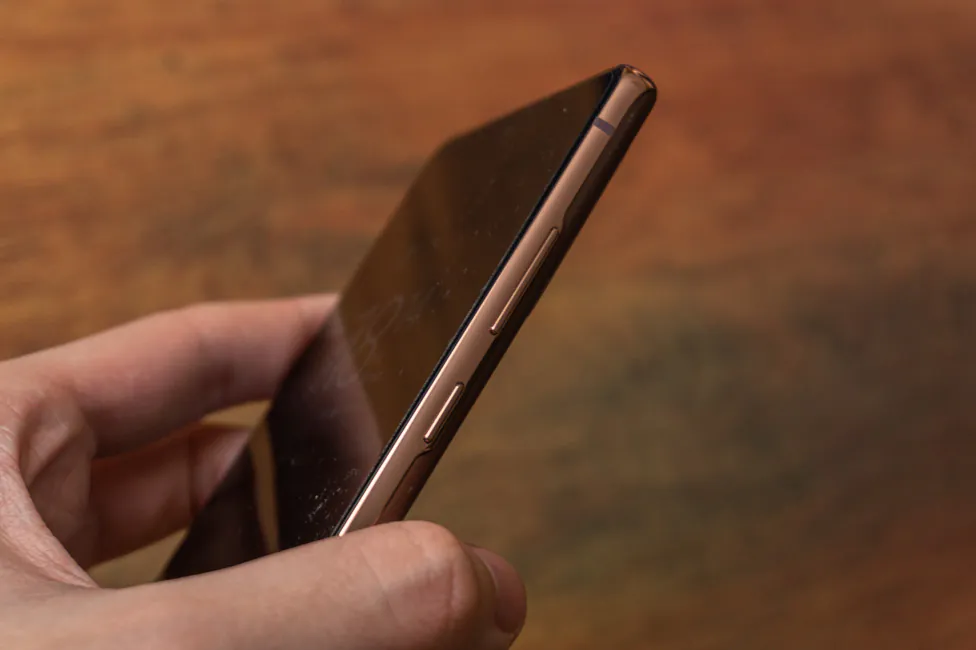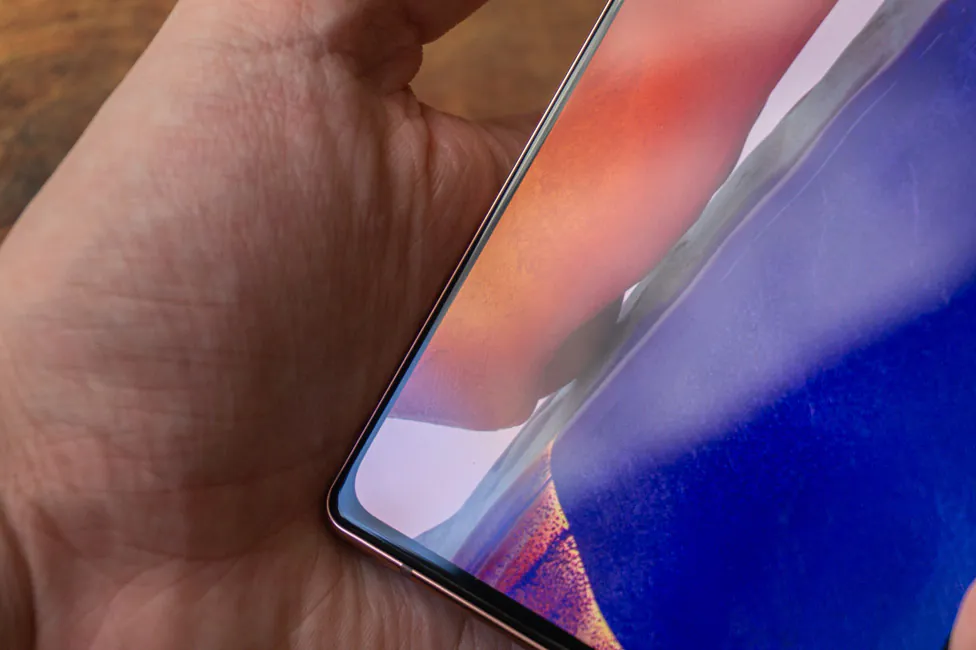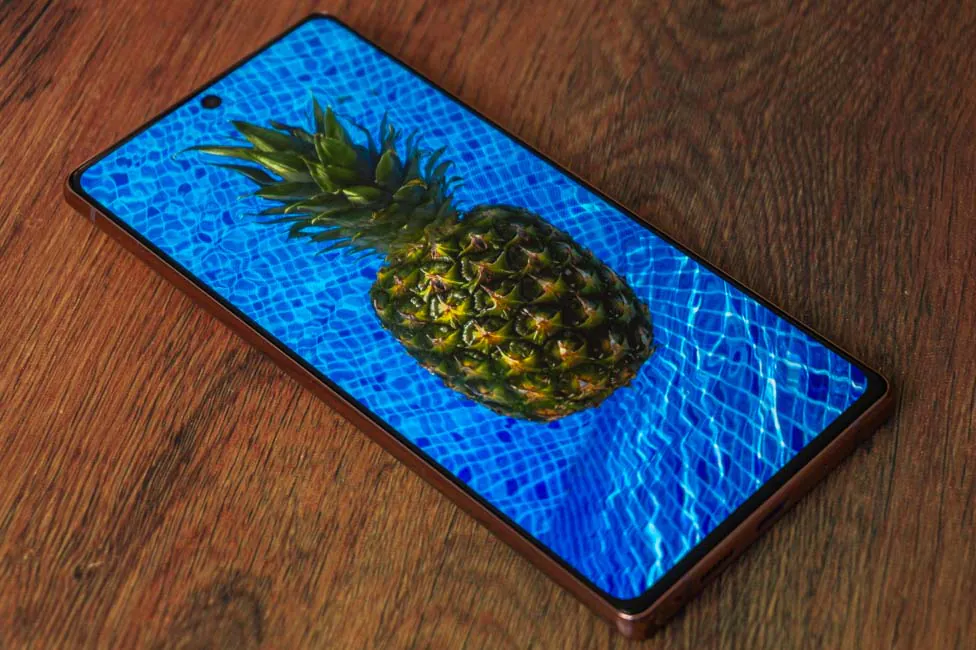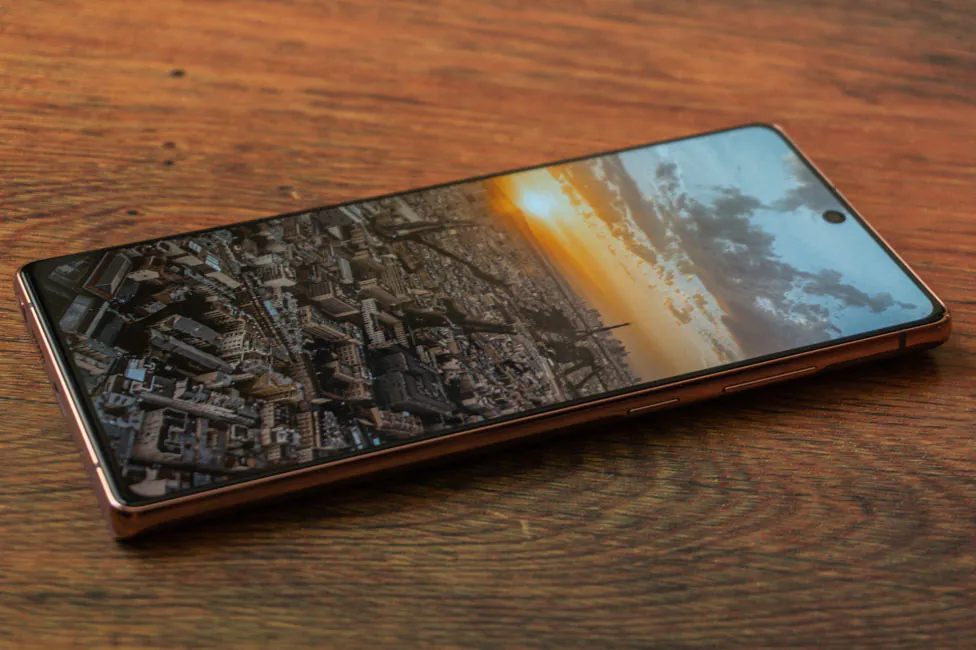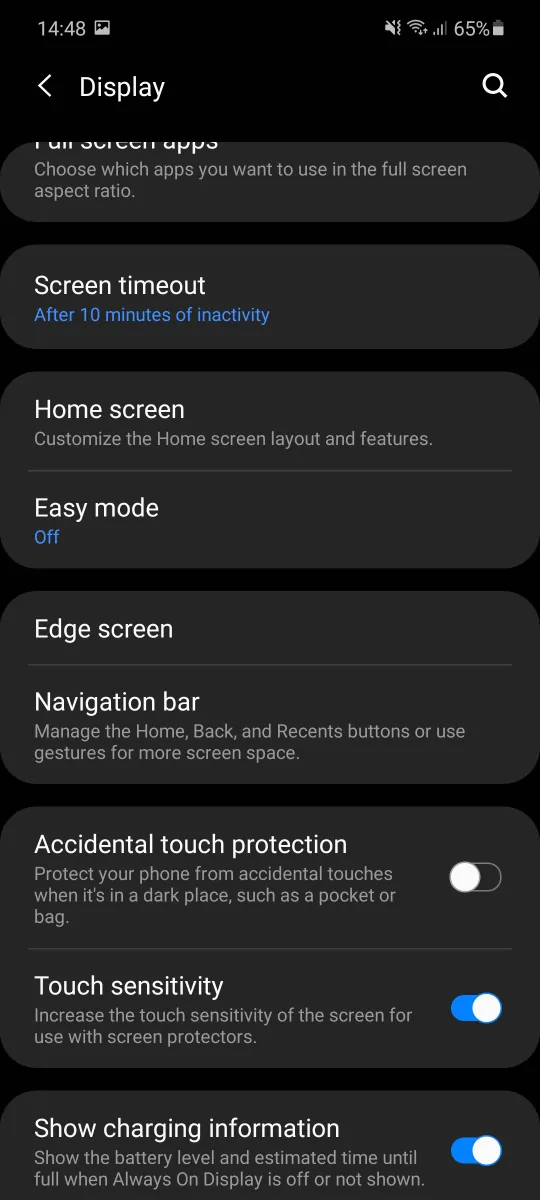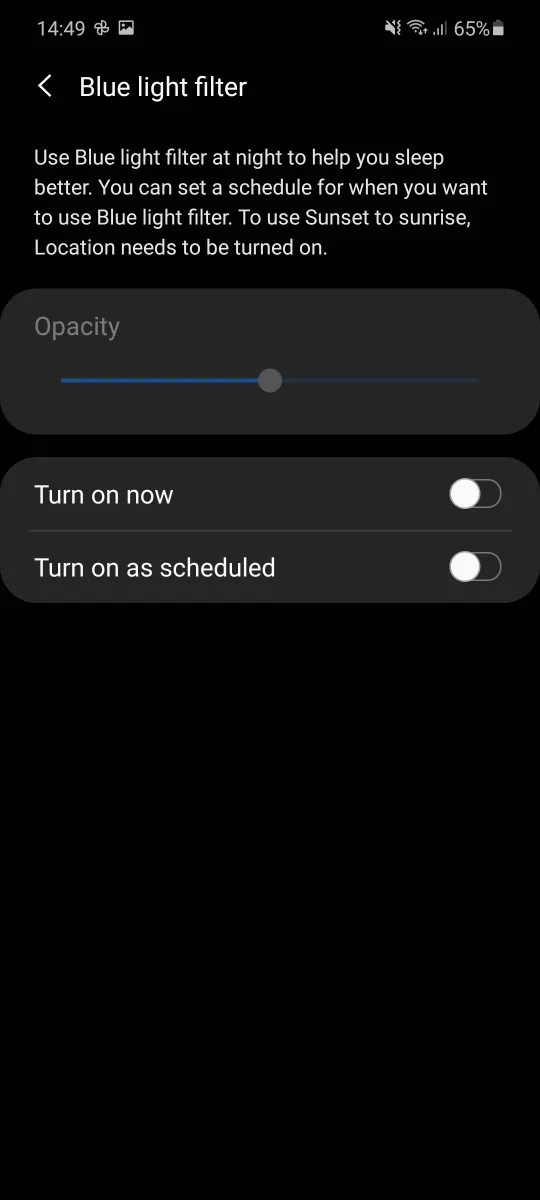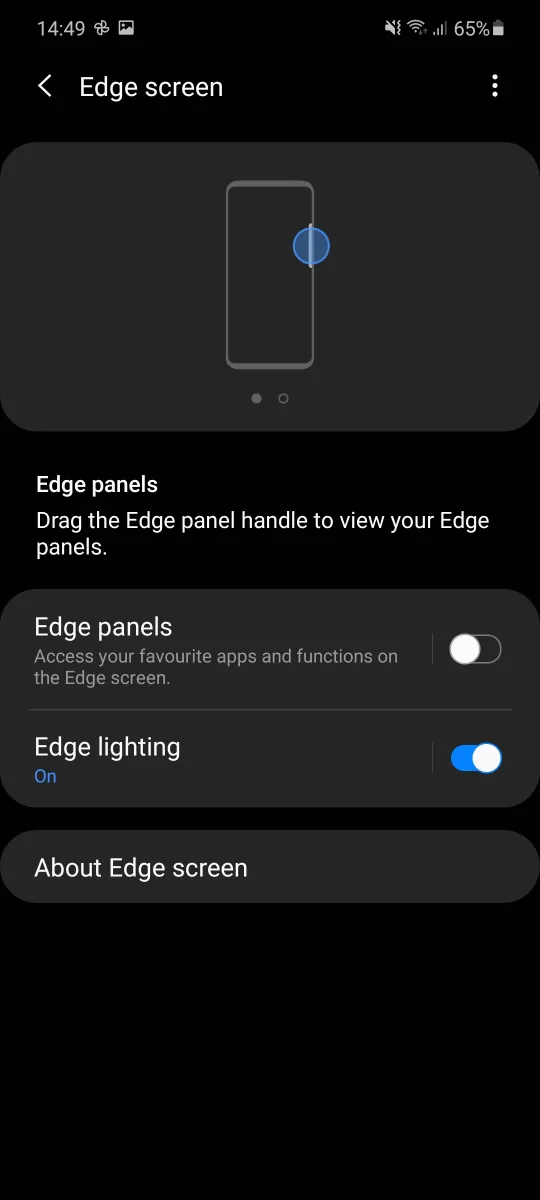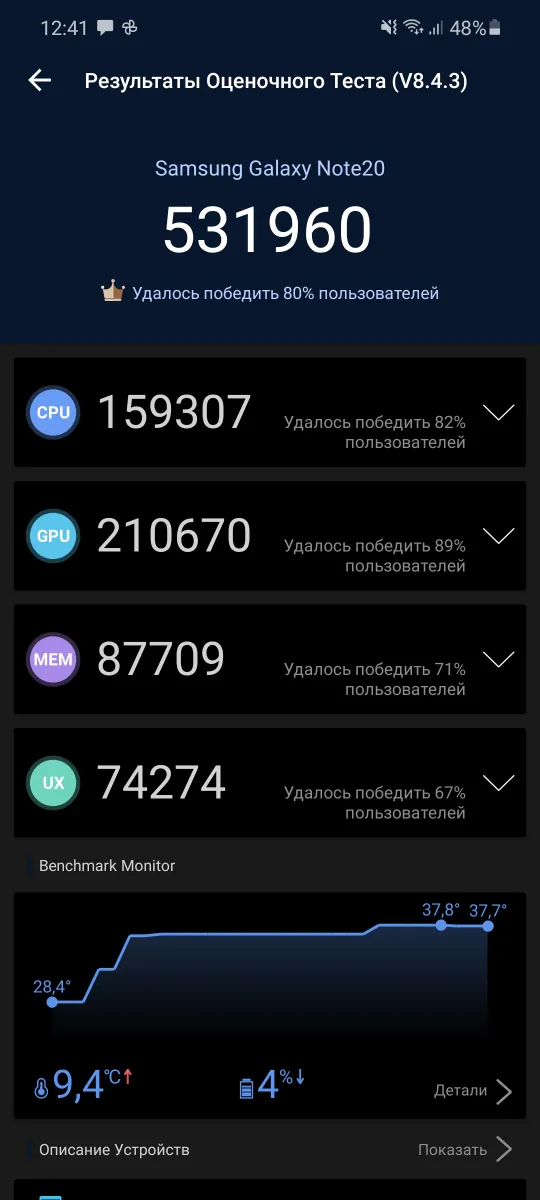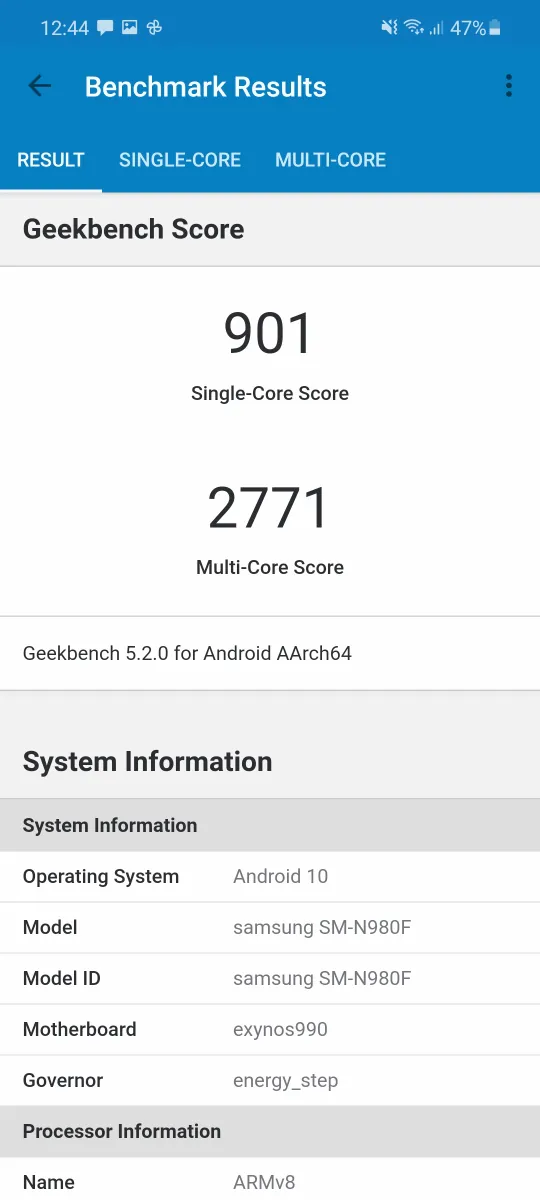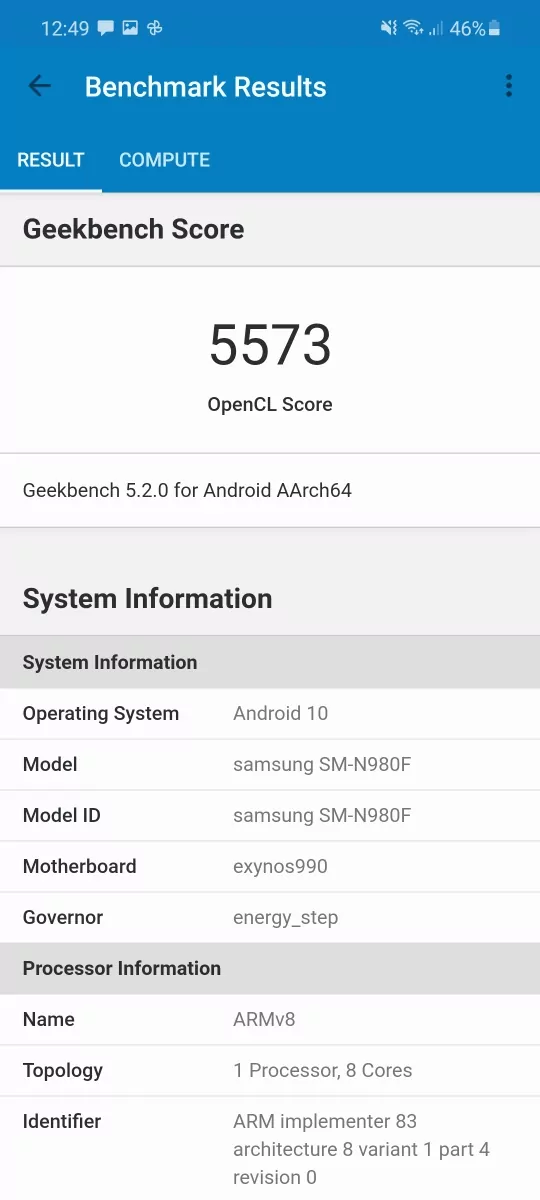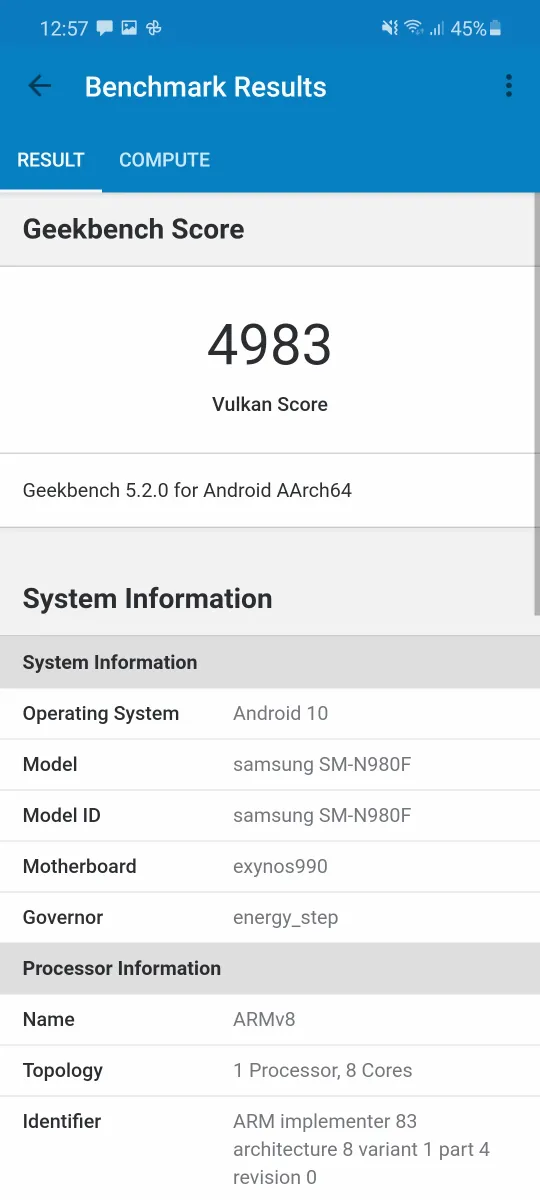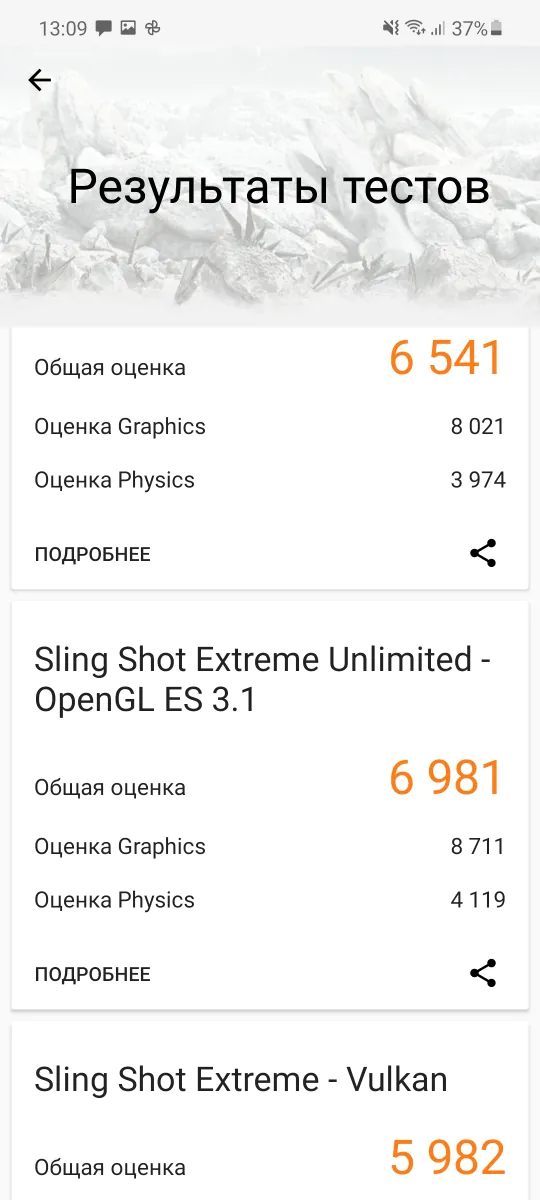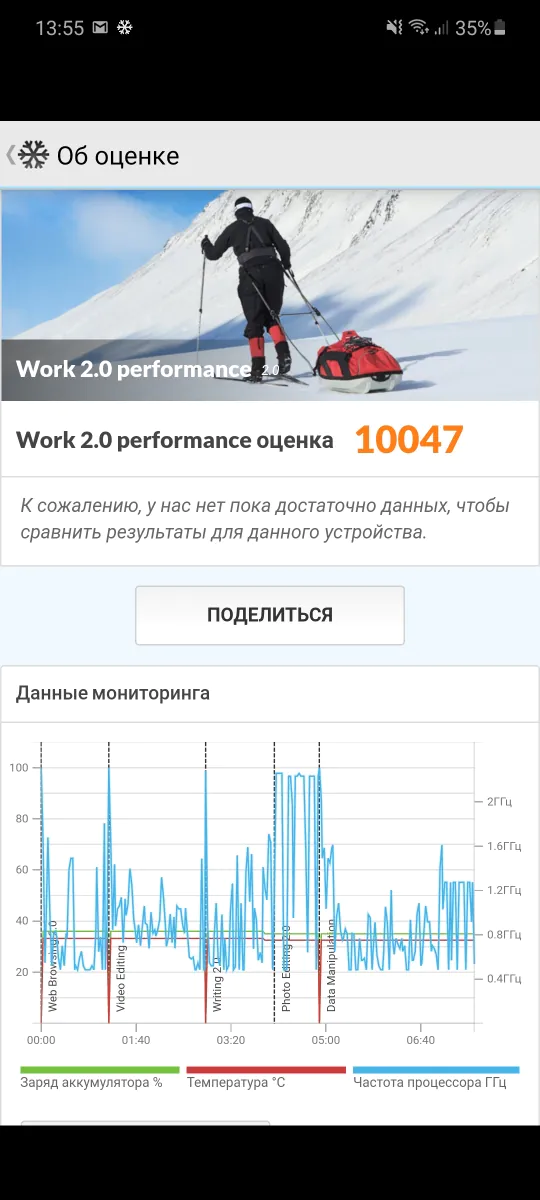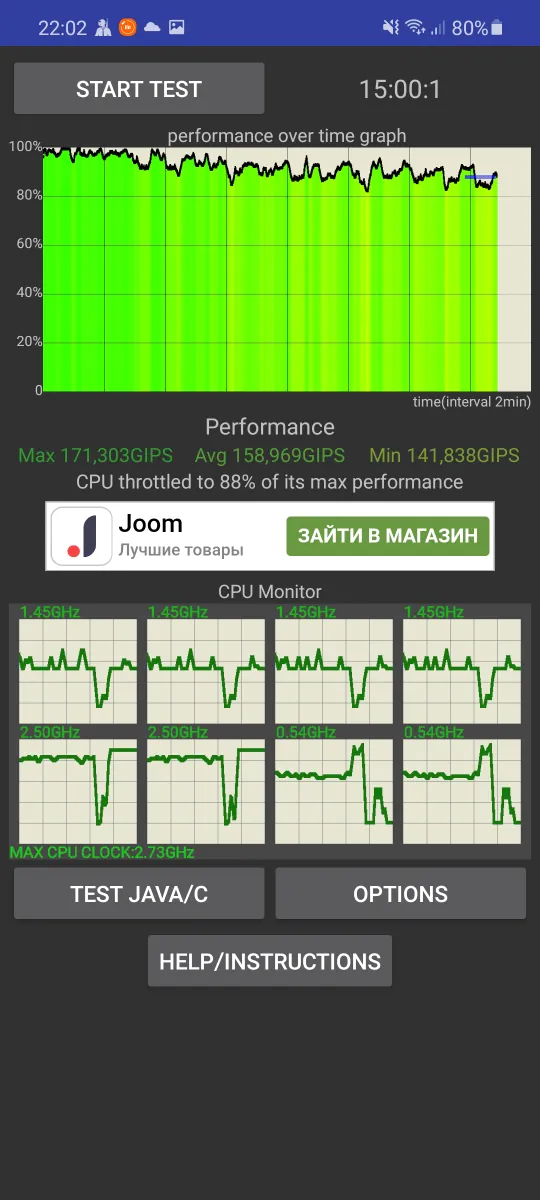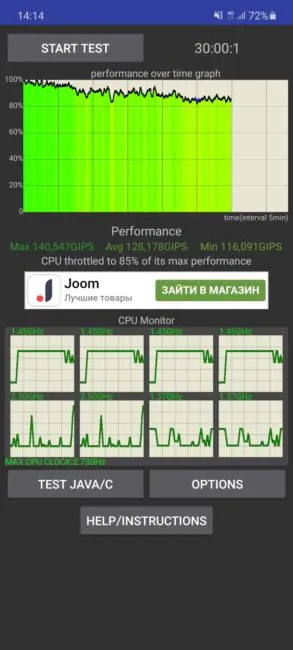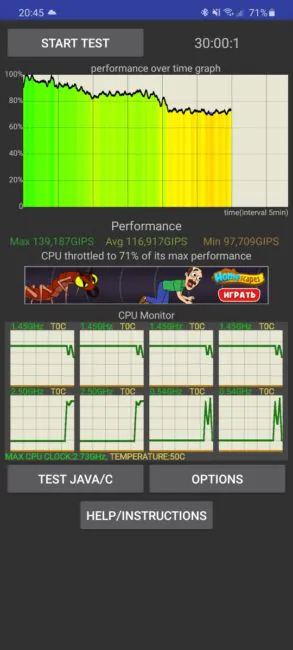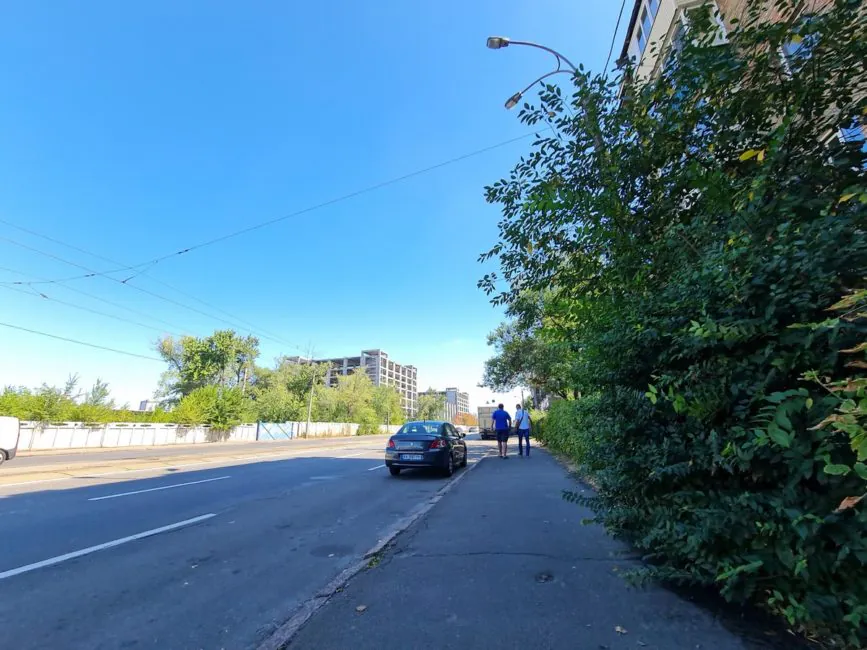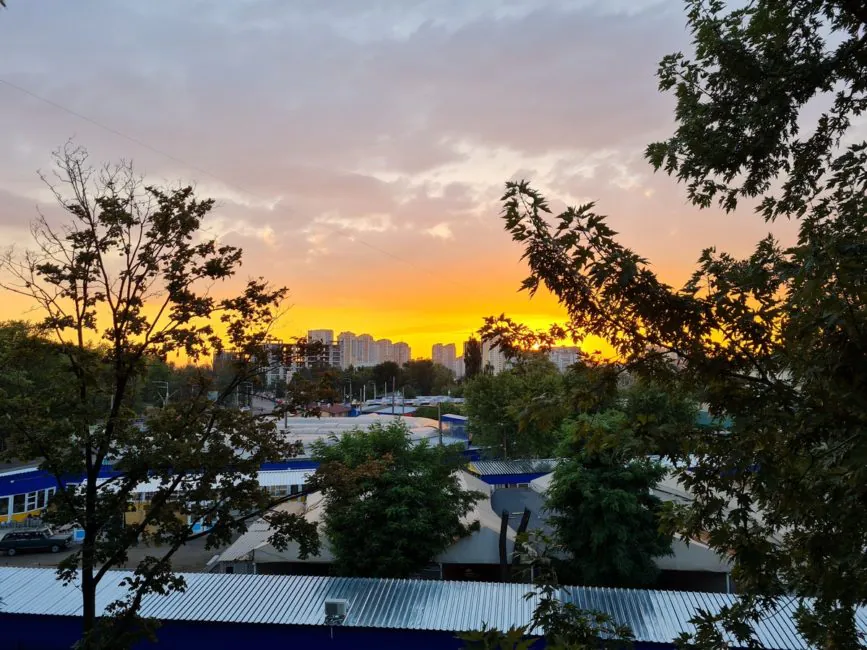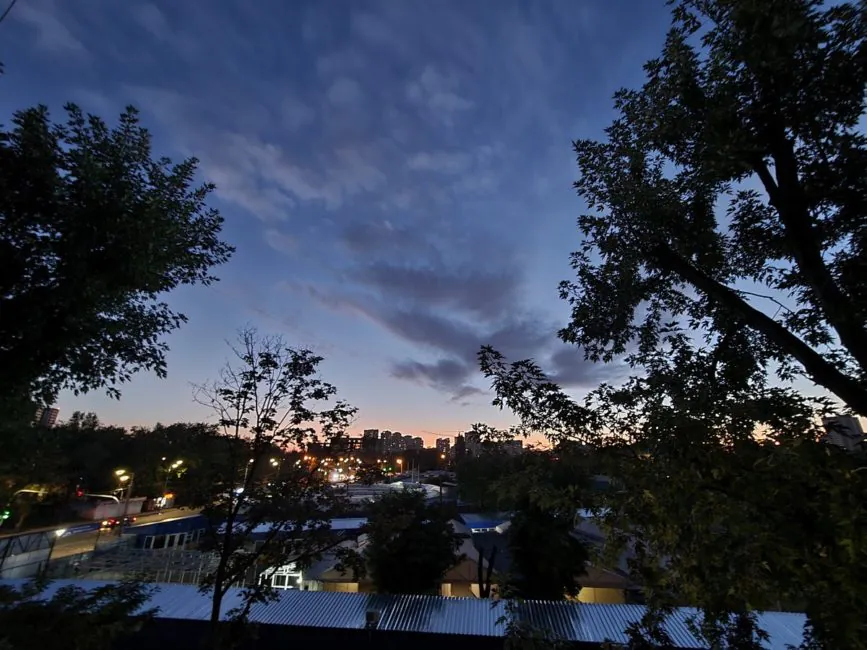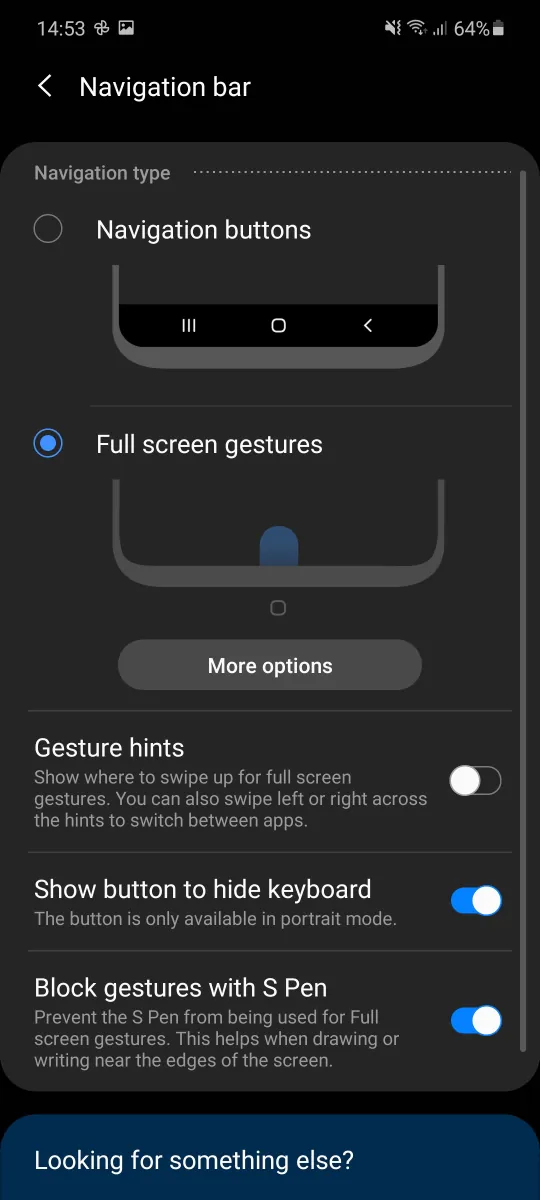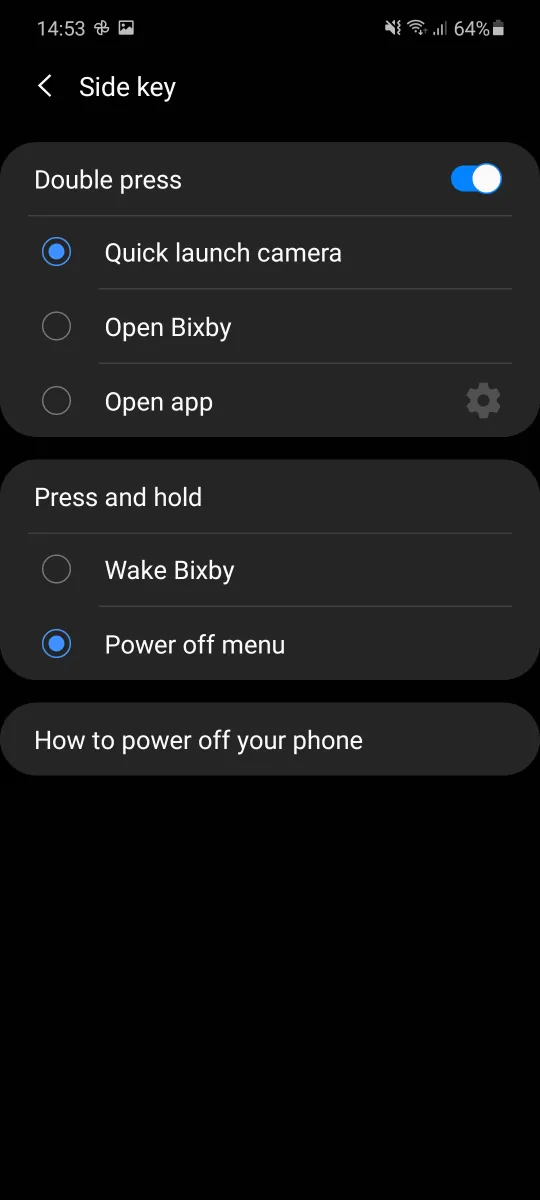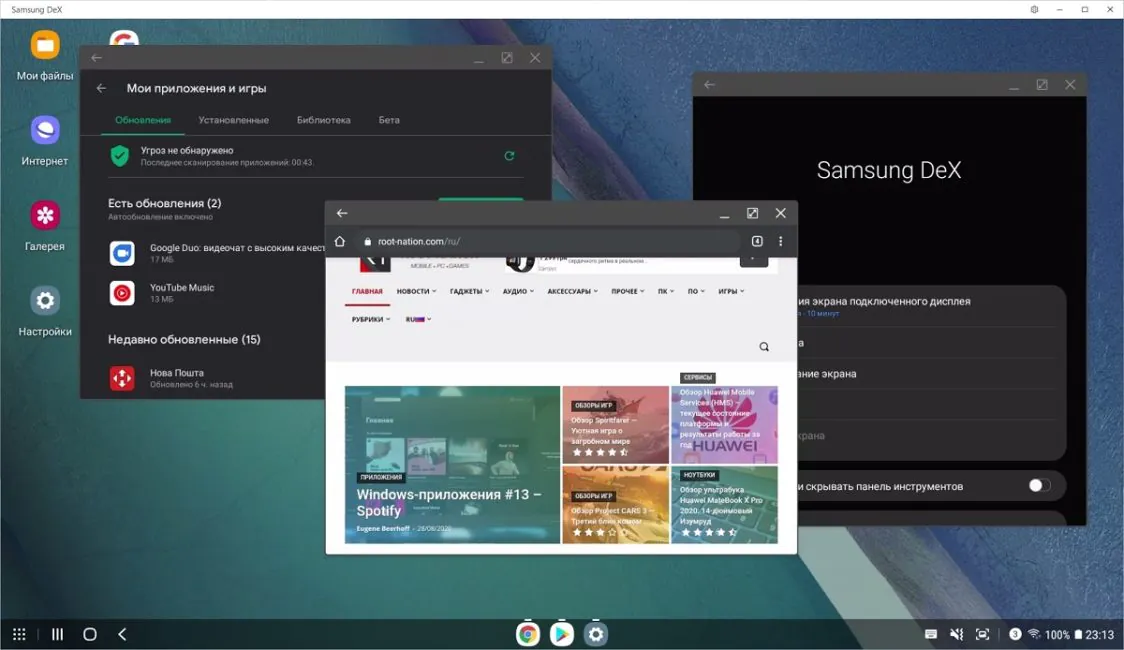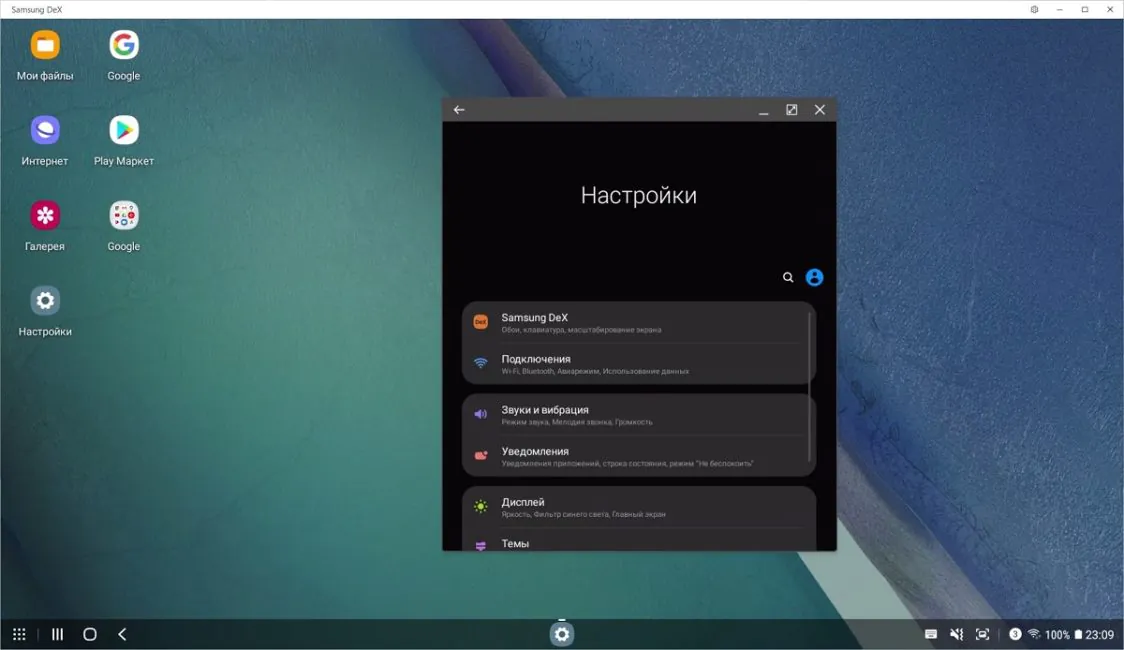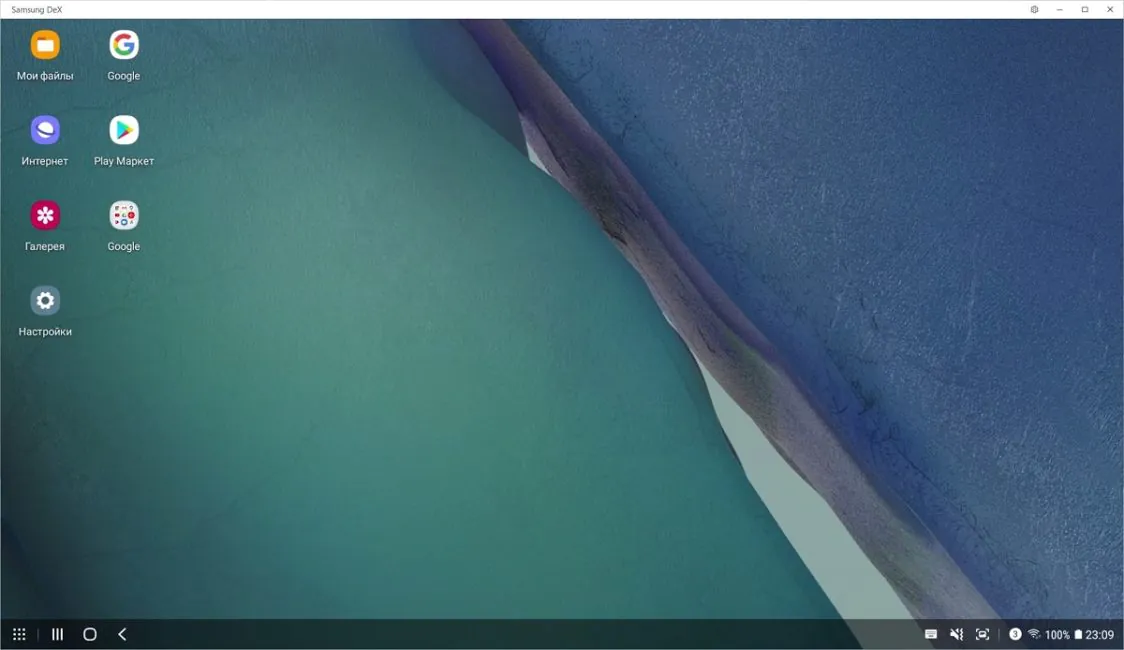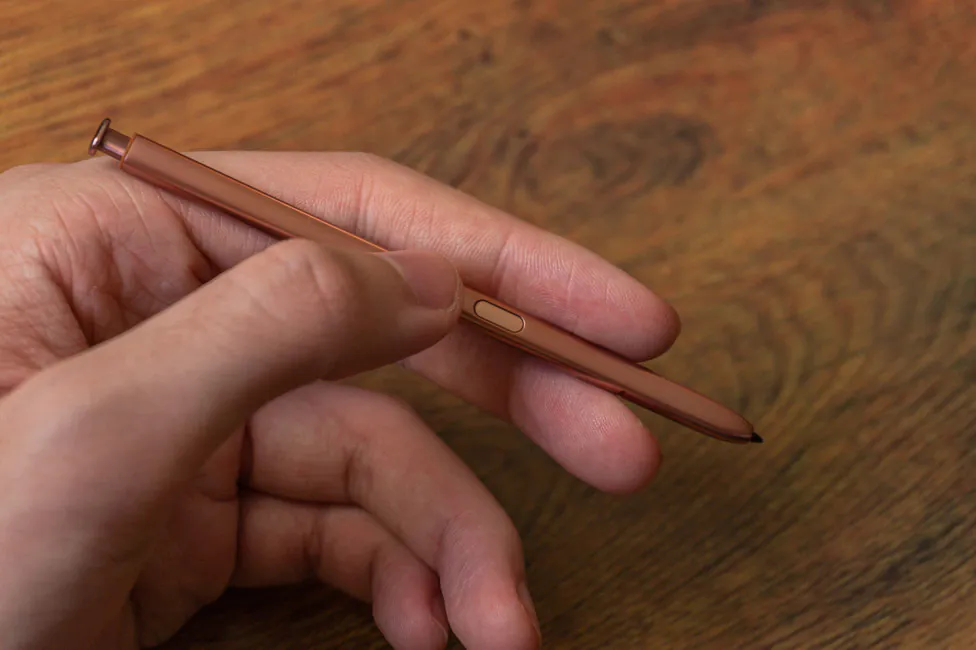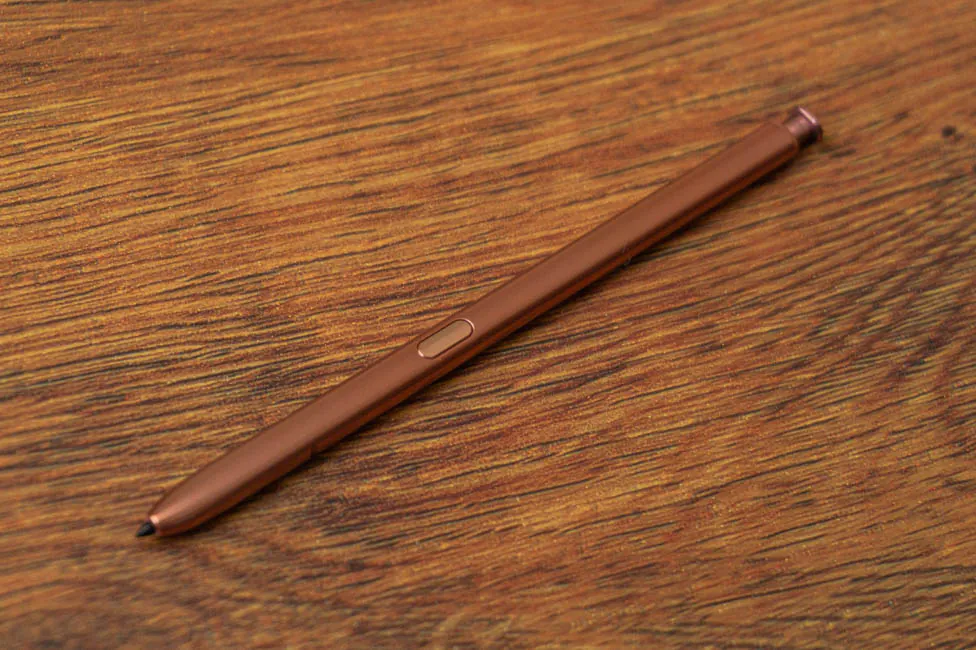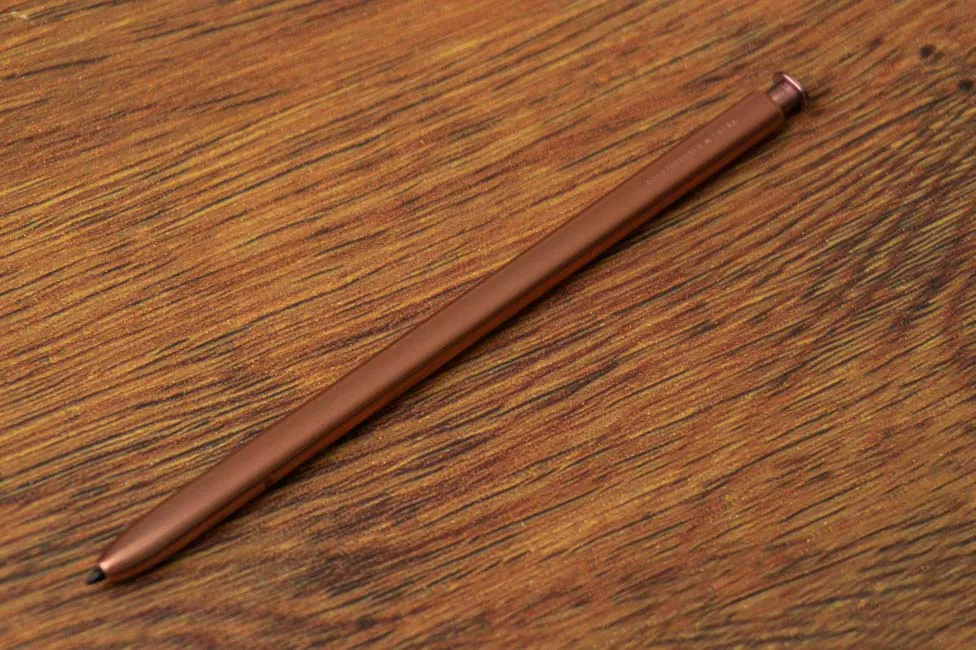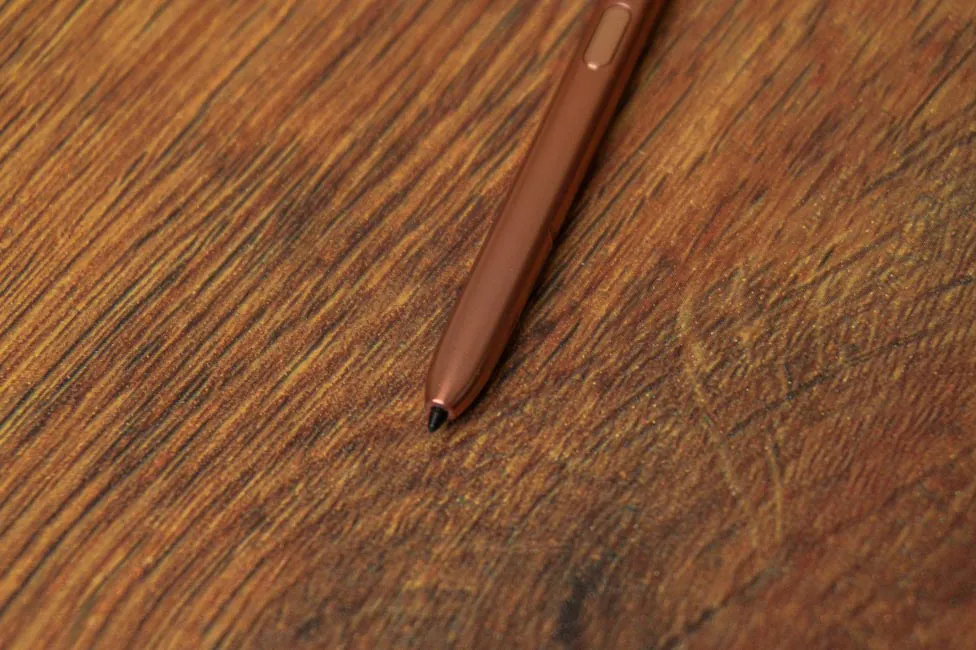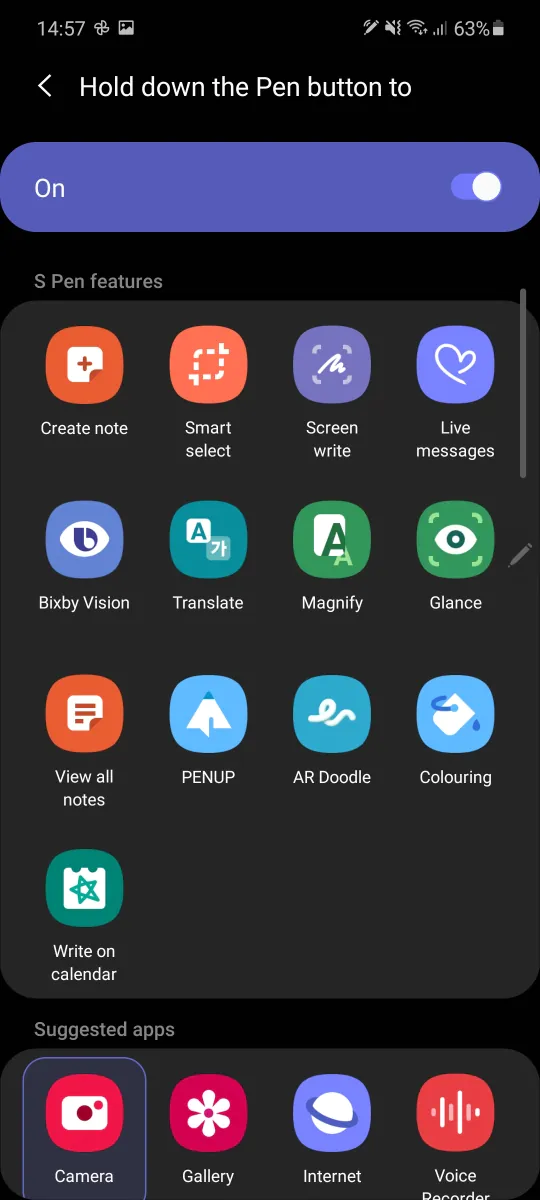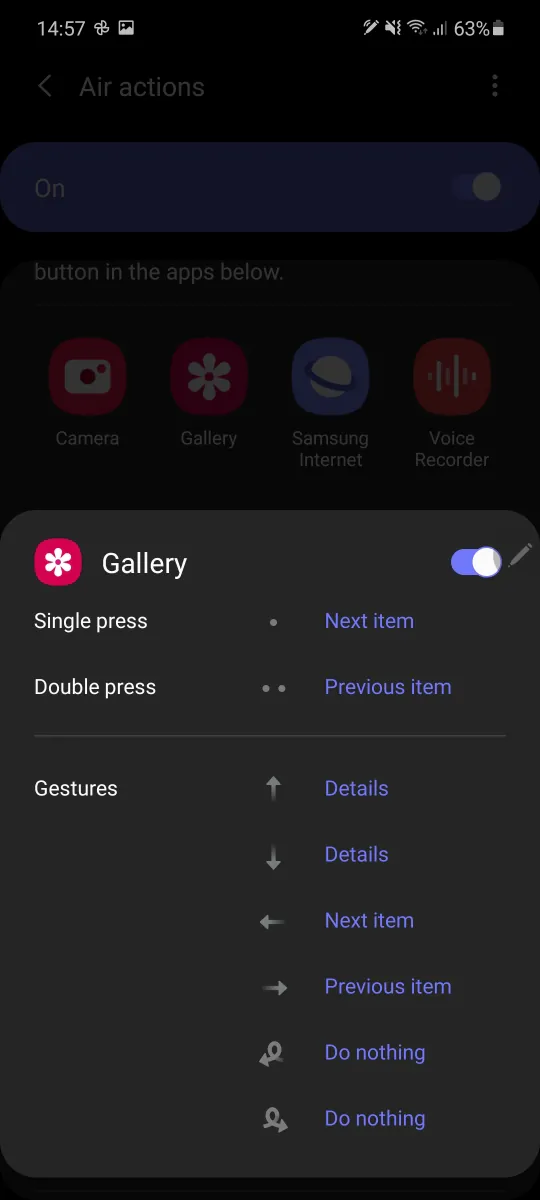© ROOT-NATION.com - Use of content is permitted with a backlink.
During the Galaxy Unpacked event Samsung presented a lot of new devices. The main protagonists are undoubtedly the new items from the Galaxy Note series. These are the Samsung Galaxy Note20 and Note20 Ultra, which came to replace last year’s Note10 and Note10+. Today I will tell you about the Samsung Galaxy Note20, for which the manufacturer received a lot of criticism at the time of the announcement. Is it deserved? Let’s find out.
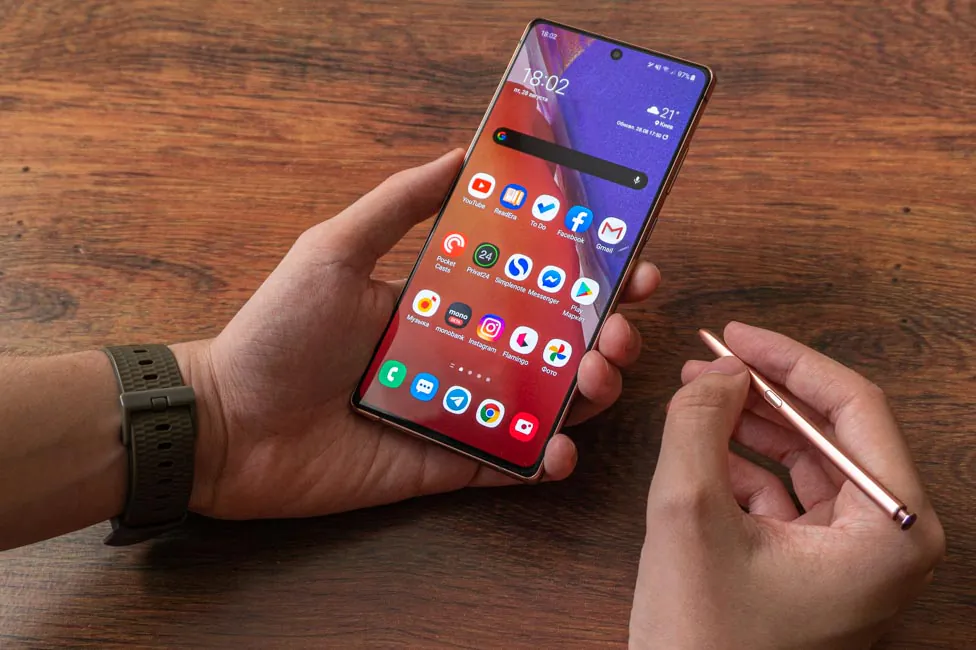
What did Note20 do wrong and what is the difference between Note20 and Note20 Ultra
Let’s go back to the Samsung Galaxy Note10 and Note10 + for a while. Last year, the company made two smartphones at once in the flagship Galaxy Note line for the first time. The differences between the two devices seemed quite logical and understandable. Or maybe not? The regular Note10 was smaller and a bit worse in terms of performance.
Due to the reduced size and hence the smaller display, the phone got the reduced resolution. The amount of RAM was also less – 8 GB instead of 12 GB in the Note10+. In addition, there was no way to expand storage. It also lost the TOF 3D camera, and it had a 3500 mAh battery. Whereas the Plus version was equipped with 4300 mAh battery with support for more powerful charging.
But in general, nothing particularly criminal. The resolution for 6.3-inches was enough, the RAM is also enough, and 256 GB of storage was still a lot. TOF camera is hardly essential. The battery could have been more. But what did the Galaxy Note20 do? With the new generation of smartphones, a flurry of criticism fell on Samsung, because when you have Note20 Ultra, the simple Note20 no longer seems like a flagship. What is the difference between new products?
Note20 Ultra is a large smartphone with a 6.9″ display, but the Note20, with its 6.7″, is hardly compact. Nevertheless, the display resolution is different, and the Note20 has Full HD+ just like the Note10. Hence the lower pixel density. But the resolution is okay, there aren’t any issues at all.
Nowadays the manufacturers have rushed into higher refresh rates and everyone expected the new Samsung flagships to get 120Hz. At least there was no reason to think otherwise, looking at the Galaxy S20 line. There, all three smartphones received 120 Hz displays. However, for reasons completely incomprehensible, the Galaxy Note20 is only 60Hz. Ultra supports 120 Hz, albeit in FHD resolution, like the current S-series. The maximum brightness can also reach 1500 nits – guess which of the two smartphones has got it.
Now to memory: Note20 is only available in 8/256 GB version, but Note20 Ultra is available with 12/512 GB. But by the way, there is another option (8/256 GB). Unfortunately, there is no microSD slot in the regular Note20, it is still present only in the Ultra version. But the volume of the battery is 4300 mAh, and the Ultra has 4500 mAh – the difference is minimal, and given the above screen nuances, we can assume that the Note20 will be live for longer.
Cameras. The number of them has become equal – three in each, but the modules themselves are mostly different. Note20 Ultra received 12 megapixel ultra-wide, 108-megapixel main sensor with laser autofocus sensor and 12-megapixel telephoto with 120 mm EGF, 5x optical zoom.
What’s in the Note20? The ultra-wide is identical, but there are simplifications. The main module is “only” 12 megapixels and without laser autofocus, while the telephoto is a 3x hybrid 64 megapixel module. To simplify, the Note20 has cameras from the S20+, but without the TOF 3D sensor.
And there are also differences in materials and a small S Pen. The display and the back of the Note20 Ultra are protected by the latest Corning Gorilla Glass Victus, while the Note20 is covered in front by Gorilla Glass 5. Not even the sixth generation, which the Note10 had. But in terms of the material of the Note20 back panel, the Koreans have destroyed all possible patterns and stereotypes, making it plastic (or polycarbonate, if you like). The S Pen’s latency was reduced to 9ms in the Ultra, while the Note20 was left with 26ms as before.
Samsung Galaxy Note20
| NETWORK | Technology | GSM / CDMA / HSPA / EVDO / LTE |
|---|
| LAUNCH | Announced | 2020, August 05 |
|---|---|---|
| Status | Available. Released 2020, August 21 |
| BODY | Dimensions | 161.6 x 75.2 x 8.3 mm (6.36 x 2.96 x 0.33 in) |
|---|---|---|
| Weight | 192 g (6.77 oz) | |
| Build | Glass front (Gorilla Glass 5), plastic back | |
| SIM | Single SIM (Nano-SIM and/or eSIM) or Hybrid Dual SIM (Nano-SIM, dual stand-by) | |
| Samsung Pay (Visa, MasterCard certified) IP68 dust/water resistant (up to 1.5m for 30 mins) Stylus, 26ms latency (Bluetooth integration, accelerometer, gyro) |
| DISPLAY | Type | Super AMOLED Plus capacitive touchscreen, 16M colors |
|---|---|---|
| Size | 6.7 inches, 108.4 cm2 (~89.2% screen-to-body ratio) | |
| Resolution | 1080 x 2400 pixels, 20:9 ratio (~393 ppi density) | |
| Protection | Corning Gorilla Glass 5 | |
| HDR10+ Always-on display |
| PLATFORM | OS | Android 10, One UI 2.5 |
|---|---|---|
| Chipset | Exynos 990 (7 nm+) – Global Qualcomm SM8250 Snapdragon 865+ (7 nm+) – USA |
|
| CPU | Octa-core (2×2.73 GHz Mongoose M5 & 2×2.50 GHz Cortex-A76 & 4×2.0 GHz Cortex-A55) – Global Octa-core (1×3.0 GHz Kryo 585 & 3×2.42 GHz Kryo 585 & 4×1.8 GHz Kryo 585) – USA |
|
| GPU | Mali-G77 MP11 – Global Adreno 650 – USA |
| MEMORY | Card slot | No |
|---|---|---|
| Internal | 256GB 8GB RAM | |
| UFS 3.0 |
| MAIN CAMERA | Triple | 12 MP, f/1.8, 26mm (wide), 1/1.76″, 1.8µm, Dual Pixel PDAF, OIS 64 MP, f/2.0, 27mm (telephoto), 1/1.72″, 0.8µm, PDAF, OIS, 3x hybrid zoom 12 MP, f/2.2, 120˚, 13mm (ultrawide), 1/2.55″, 1.4µm |
|---|---|---|
| Features | LED flash, auto-HDR, panorama | |
| Video | 8K@24fps, 4K@30/60fps, 1080p@30/60/240fps, 720p@960fps, HDR10+, stereo sound rec., gyro-EIS & OIS |
| SELFIE CAMERA | Single | 10 MP, f/2.2, 26mm (wide), 1/3.2″, 1.22µm, Dual Pixel PDAF |
|---|---|---|
| Features | Dual video call, Auto-HDR | |
| Video | 4K@30/60fps, 1080p@30fps |
| SOUND | Loudspeaker | Yes, with stereo speakers |
|---|---|---|
| 3.5mm jack | No | |
| 32-bit/384kHz audio Tuned by AKG |
| COMMS | WLAN | Wi-Fi 802.11 a/b/g/n/ac/6, dual-band, Wi-Fi Direct, hotspot |
|---|---|---|
| Bluetooth | 5.0, A2DP, LE, aptX | |
| GPS | Yes, with A-GPS, GLONASS, BDS, GALILEO | |
| NFC | Yes | |
| Radio | FM radio (Snapdragon model only; market/operator dependent) | |
| USB | 3.2, Type-C 1.0 reversible connector, USB On-The-Go |
| FEATURES | Sensors | Fingerprint (under display, ultrasonic), accelerometer, gyro, proximity, compass, barometer |
|---|---|---|
| Samsung Wireless DeX (desktop experience support) ANT+ Bixby natural language commands and dictation |
| BATTERY | Type | Li-Ion 4300 mAh, non-removable |
|---|---|---|
| Charging | Fast charging 25W USB Power Delivery 3.0 Fast Qi/PMA wireless charging 15W Reverse wireless charging 4.5W |
What’s in the box
The Samsung Galaxy Note20 traditionally came to me without a box, but it is no different from what the S20 series. You get a 25W power adapter with USB-C, a Type-C to Type-C cable, AKG wired USB-C headphones with additional eartips of different sizes, a SIM card eject tool and documentation.
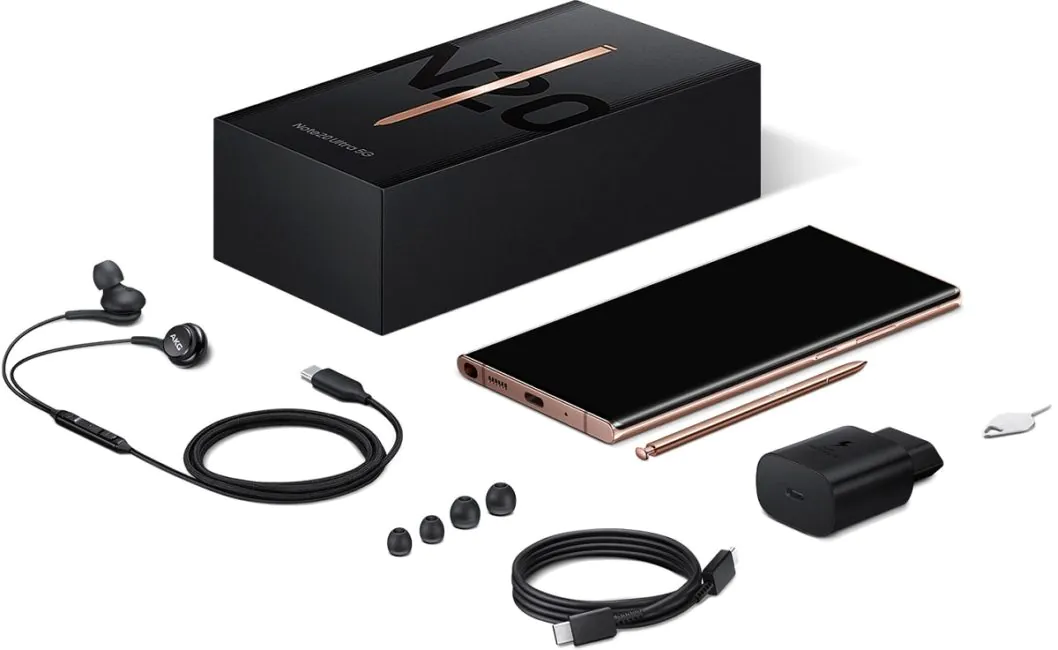
Design, materials and build quality
The manufacturer refers to the design of the new Samsung Galaxy Note20 as minimalistic. And in fact, the way it is, a similar thing can be said about the Samsung Galaxy S20+. However, as for the Note line, I must say that it looks more distinctive in my opinion. Yes, there is no huge difference, but due to the stricter and more angular forms, it is not so easy to confuse new a mid-ranger.
Galaxy Note20 has a less “sharp” design than its older brother. The upper and lower edges are cut, with a brushed metal texture. The corners are slightly rounded. But the glass in the front is not rounded or curved, which many will like.
The front panel design is absolutely classic for many Samsung devices released since the beginning of the year. True, there are issues. But let’s start with the positive – the bezels. They are very thin, the top is similar to the side ones, although due to specific angles it may seem different. Below, traditionally, the field will be thicker.
But let’s talk about the hole with the front camera. No, I am not at all against it, on the contrary. However, the diameter of the eye is too large in my opinion. Why couldn’t it be as tiny as in the S20+ is unclear. Note20 Ultra got a better, smaller selfie camera. Oh well.
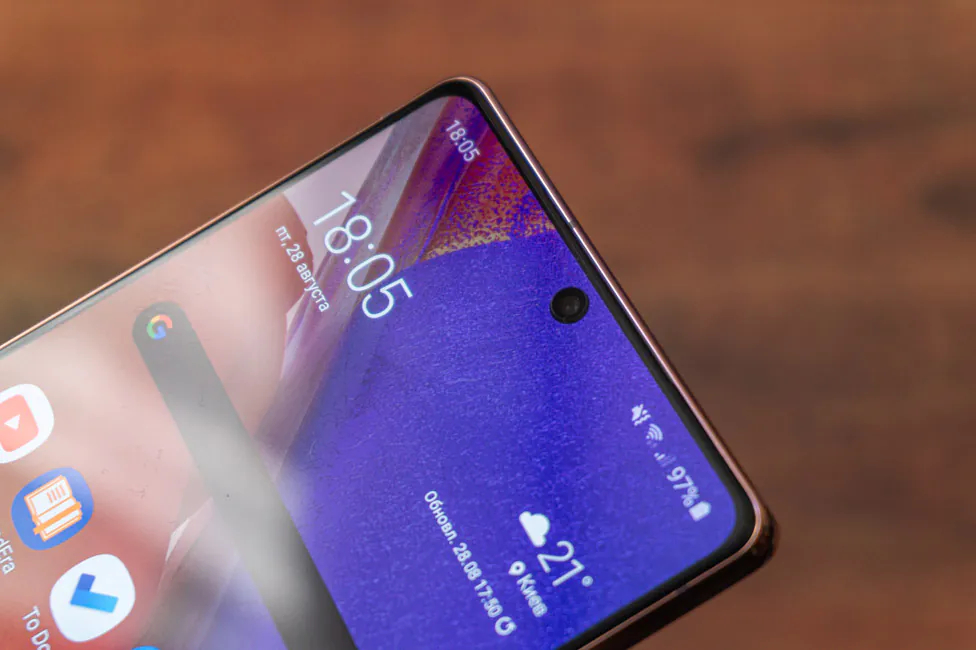
Now the camera unit, because what else distinguishes smartphones from the back? In the Note20 it is not as impressive as in the Ultra version, but compared to the S20 series, the difference is big. The S series look as unassuming as possible, but here on the contrary, there are large eyes with a symmetrical arrangement and in an additional edging. Visually, it makes the modules even more visible and larger than they actually are. All this is enclosed in a rectangle with rounded corners.
The polished aluminum frame is similar to the S20 line: wide at the top and bottom, more than half as thin on the right and left, and with a noticeable thickening under the buttons. The only difference is that a texture appeared on flat cuts.
Since we’re talking about premium devices, it’s time to talk about the Note20’s plastic back. It looks like absolutely everyone is furious about it. A flagship with plastic instead of glass? How dare they! Well, fair enough, I guess. Samsung has been pampering flagship users with glass on both sides and from whom for many years, and no one could have imagined such a move from them. However, it happened.
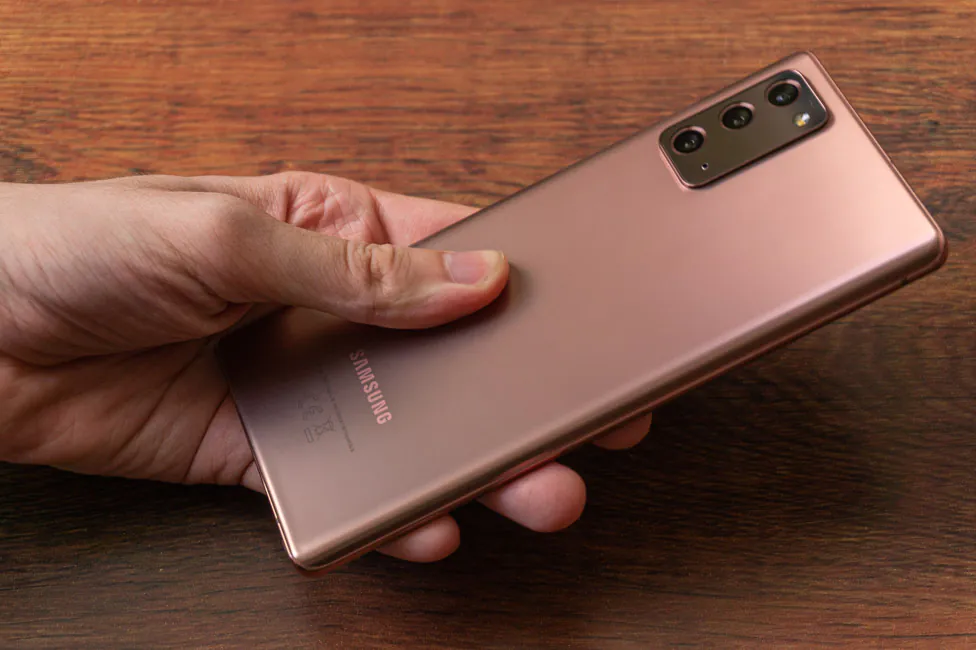
In this case, I will not side with Samsung, since yes, glass had to be used in such an expensive smartphone. Tactile sensations are important, and the perfectionist should be satisfied. Again, for my part, I do not see any intelligible reasons why it was worth designing it that way.
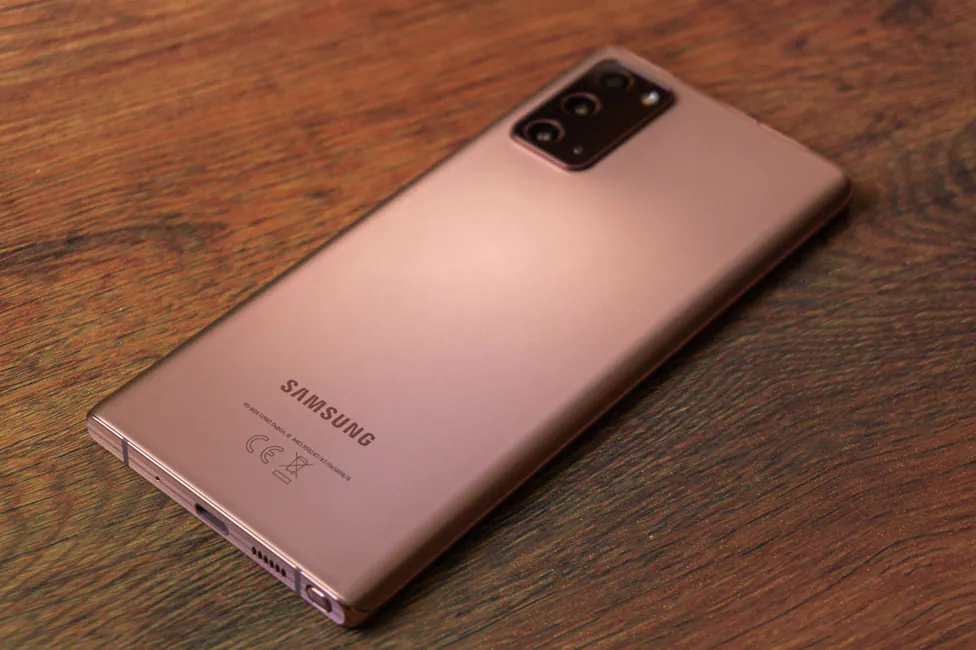
But on the other hand, there is no tragedy. Because the execution is, of course, excellent. In order to understand that it is plastic, you should tap on the back and listen to the sounds it makes. The plastic does not bend at all, no matter the force. Plus there is a chance that it will not break like glass when dropped. In short – I condemn, but I don’t see a disaster. This smartphone has more significant issues.
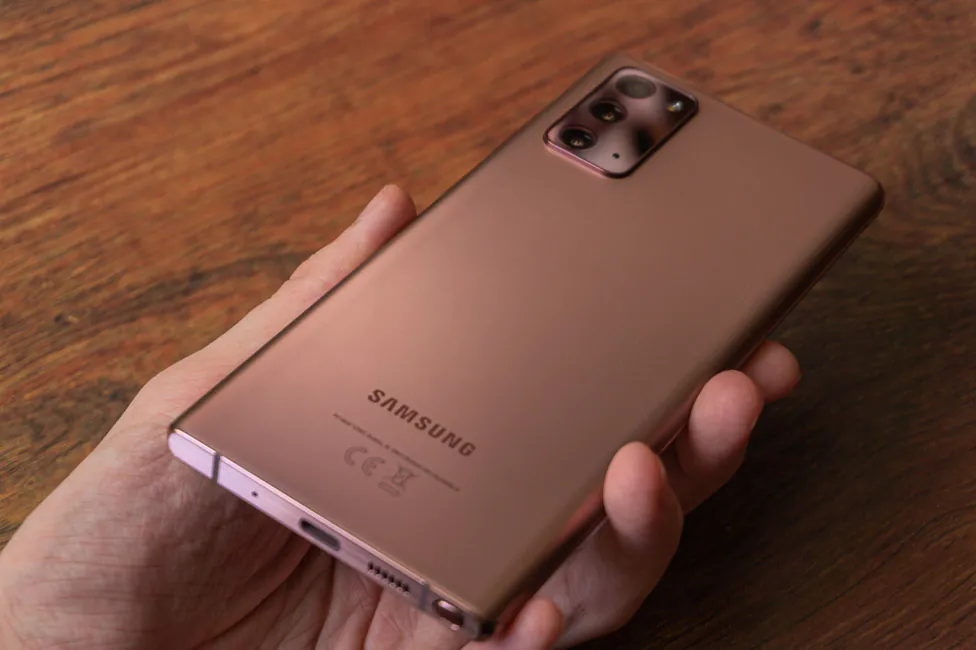
The case itself does not attract fingerprints thanks to matte finish. I couldn’t make sure that there is an oleophobic layer on the front glass due to the presence of a protective film on the screen, which is quite good, by the way. You get Gorilla Glass (5 gen), which is again strange, since there are sixth and the seventh generations (Victus) available, which, judging by the first tests, are indeed very durable. But you still get IP68.
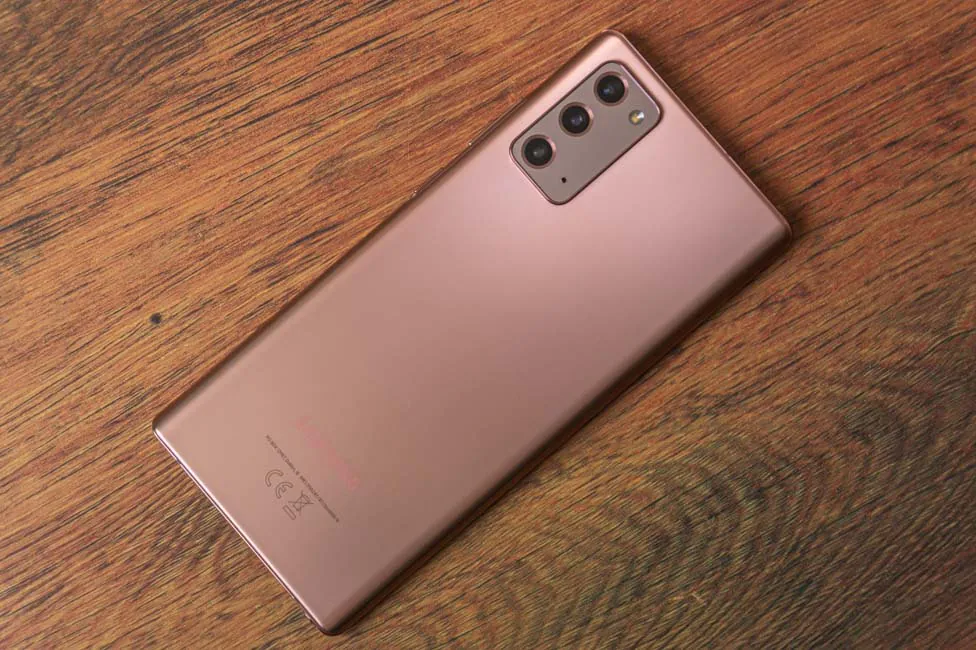
The colors remained. Samsung Galaxy Note20 is available in very unusual colors. One might think that this is a solid, expensive smartphone for serious people, and yet, the main color of the entire Galaxy Unpacked presentation in August is bronze. The device looks good in this color, and depending on the amount, direction, brightness, shade of the light, it may slightly change, going slightly pinkish or, on the contrary, grayish.
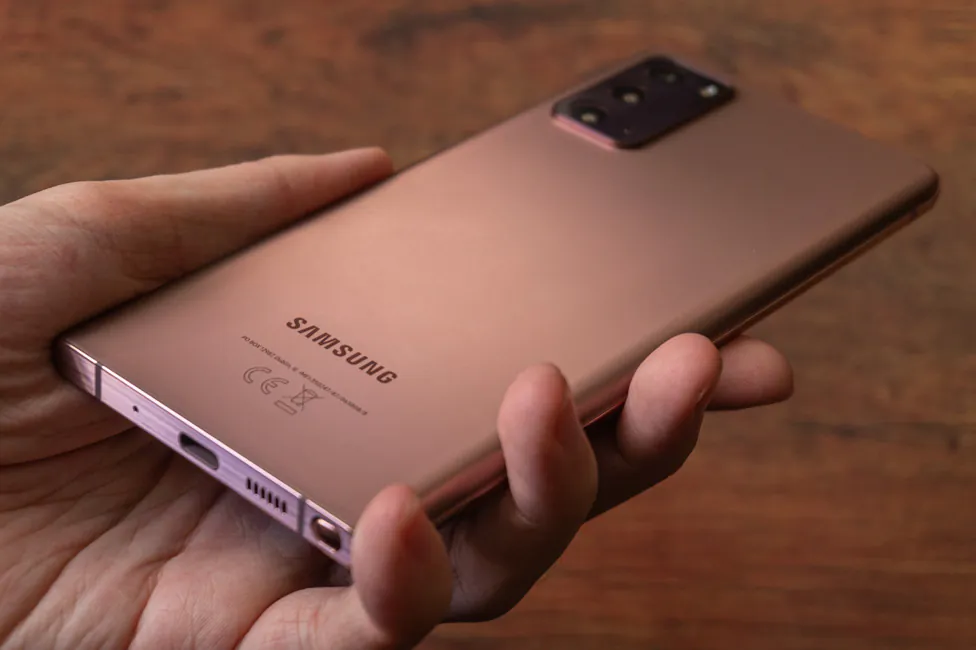
There is also an entertaining mint and graphite colors, the strictest of all.
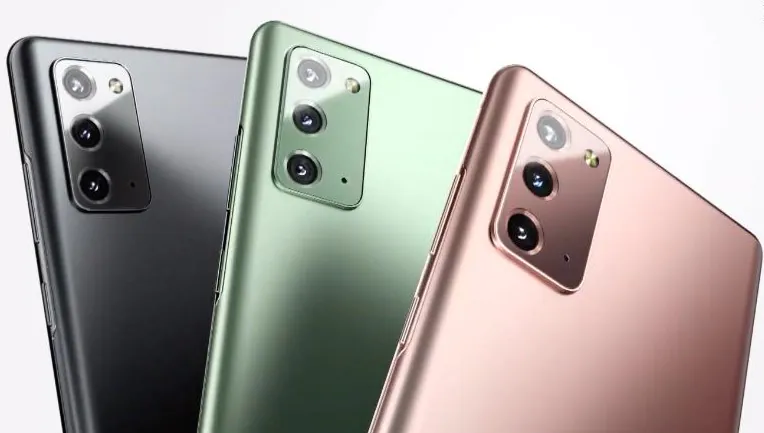
Elements configuration
On the top front there is an earpiece speaker, a front-facing camera, a light and proximity sensors.
On the right side there is a power button and a volume rocker, while the left side is empty. Let me remind you that in Note9 the keys are spaced on different edges, while in Note10 everything was on the left. Now the buttons are on the right, like in most smartphones.
The upper edge includes a slot for two nanoSIM cards, as well as an additional microphone. Below are the main microphone, Type-C port, multimedia speaker slots and an S Pen connector.
On the back we have three camera eyes of the same diameter, a flash and a third microphone. At the bottom there’s the Samsung logo.
Ergonomics
A large smartphone with a 6.7″ screen means it’s not very convenient to use with one hand. Therefore, the device (161.6 × 75.2 × 8.3 mm) that weights 192 grams has to be used with two hands. But that’s to be expected.
As a righty, I had nothing to complain about. It is also nice that the manufacturer began to bend the glass-plastic of the backplate, and not the glass of the front. No more false touches, and the smartphone is more pleasant in the hand.
However, there are issues. The connector with the stylus has migrated to the left, and because of that you need to slightly change the grip in order to get it. A little feature for lefties.
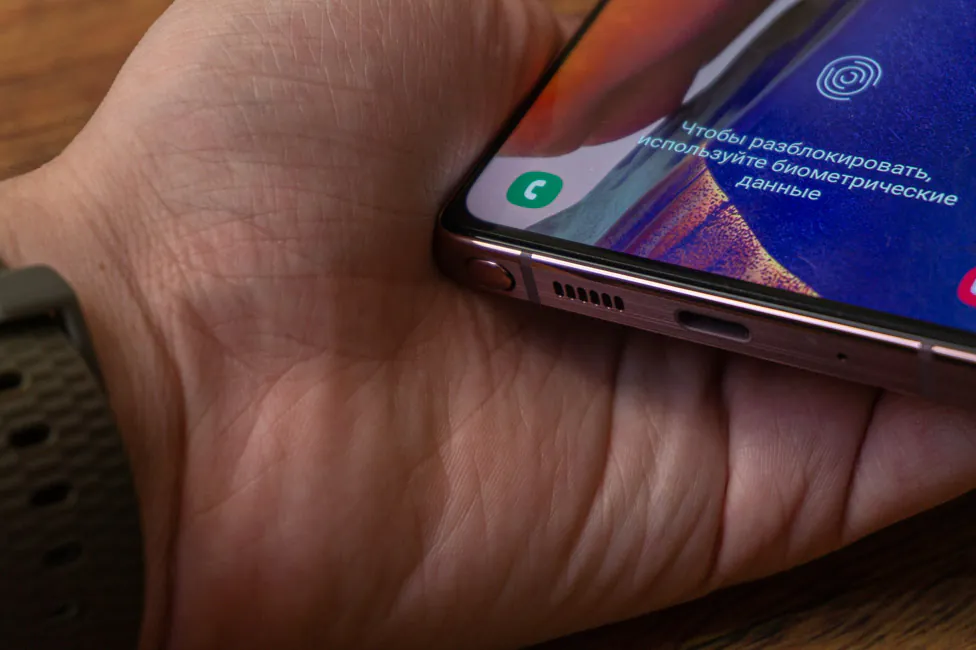
Samsung Galaxy Note20 display
The phone has a 6.7″ Super AMOLED display with a Plus prefix. It’s Full HD+, or 2400×1080 pixels. The aspect ratio of the display is 20:9, and the pixel density is 393 ppi. There is support for HDR10+, but the screen refresh rate, as already mentioned, is only 60 Hz.
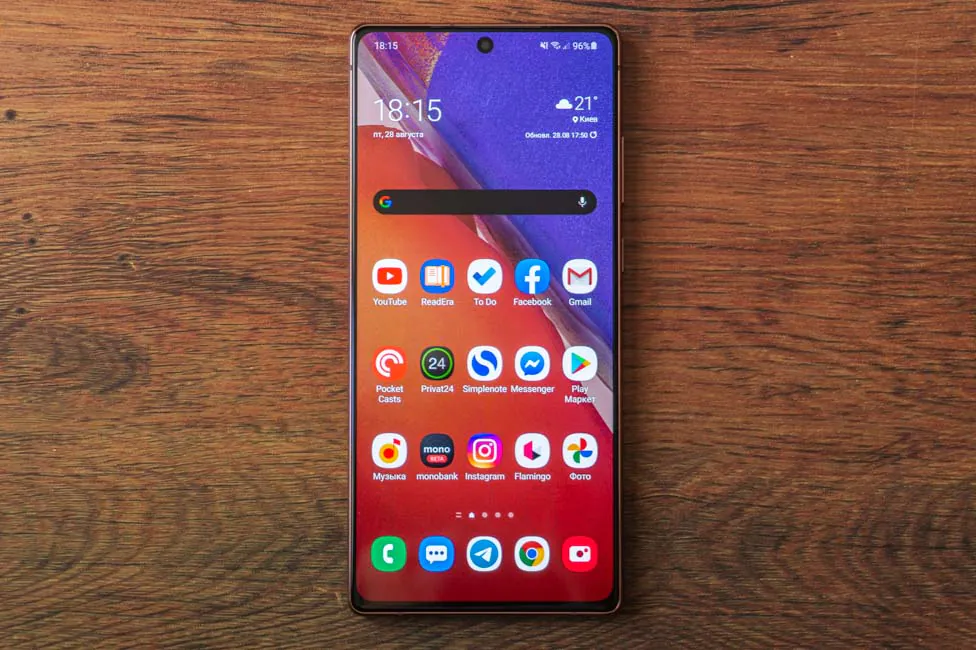
And before proceeding directly to the discussion of the display itself let’s talk about the big issue. The resolution, of course, is not WQHD+, as in any of the current Galaxy S20, but this is nothing new for the Note line. Last year’s Galaxy Note10 also had 1080p. Another question – is it enough for this size? And the answer is simple – yes, quite. Moreover, some users who have a flagship smartphone with QHD still choose FHD in the settings in order to slightly reduce power consumption or slightly increase performance. If we talk about Samsung smartphones, everything is simple there. With the advent of 120 Hz, there is no way to use full resolution anyway. I don’t know about other people, but personally I prefer a significant increase in the smoothness of the picture.
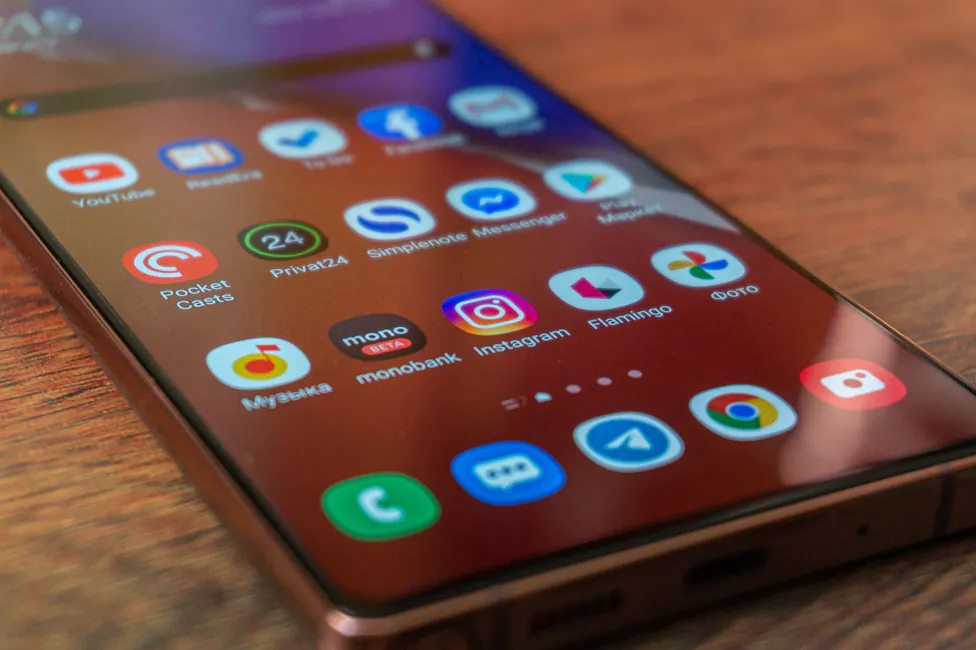
In general, I don’t see any particular problem with the resolution. However … I cannot say the same about the refresh rate of the screen. In this case, the reason for installing a panel with support for classic 60 Hz is not clear to me. If we again draw a parallel with the S20, there you got 120 Hz in every device, from small to large. Even the basic S20 in spite of the dimensions and 4000 mAh battery received increased frequency.
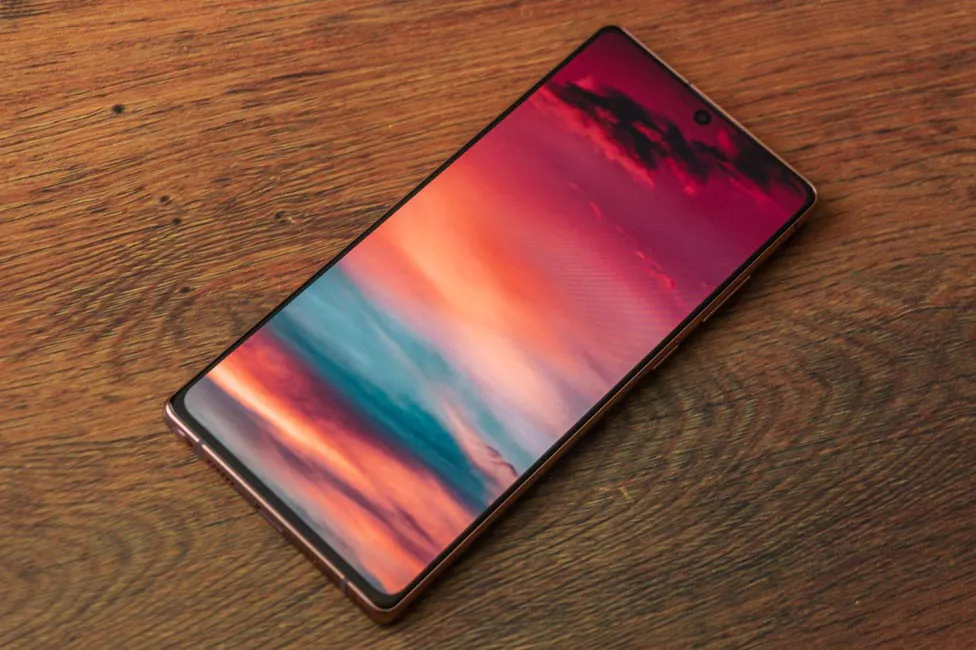
Perhaps they wanted to differentiate this smartphone from the other version. It’s very unfortunate. It’s absolutely unjustified to offer this refresh frequency for such a price.
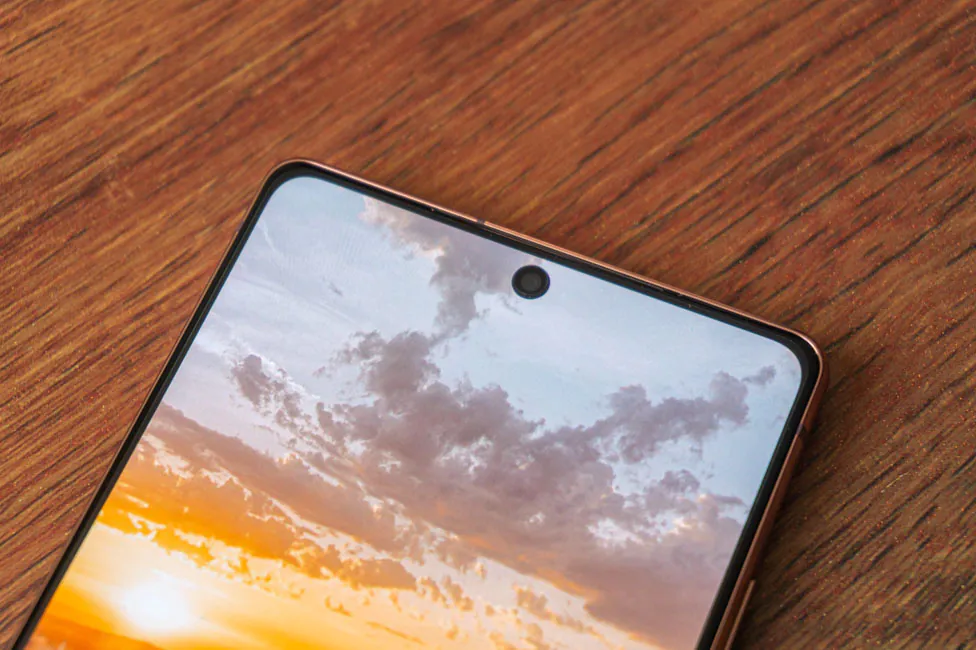
Otherwise it’s all great: a good margin of brightness (although the Ultra is better), wide viewing angles, but the white color can turn green a little. The image quality is great, this is a typical Samsung panel with all that it implies. But it’s still not the best, for the reason mentioned above.
The settings are quite typical: light/dark theme, blue light filter, two color display modes. Also, in addition to the scaling and font size settings, there is a forced display of applications in full screen mode. There are Edge quick access panels, edge lighting on incoming notifications, protection against accidental touches and increased sensitivity of the touch layer. Of course, the highly customizable Always On Display is also available.
Samsung Galaxy Note20 performance
Samsung Galaxy Note20 can be equipped with different platforms in different markets. The US and South Korea get Qualcomm Snapdragon 865+, an overclocked version of the 865 found in the current S-series. The rest of the markets, including Europe, will receive 7nm Exynos 990.
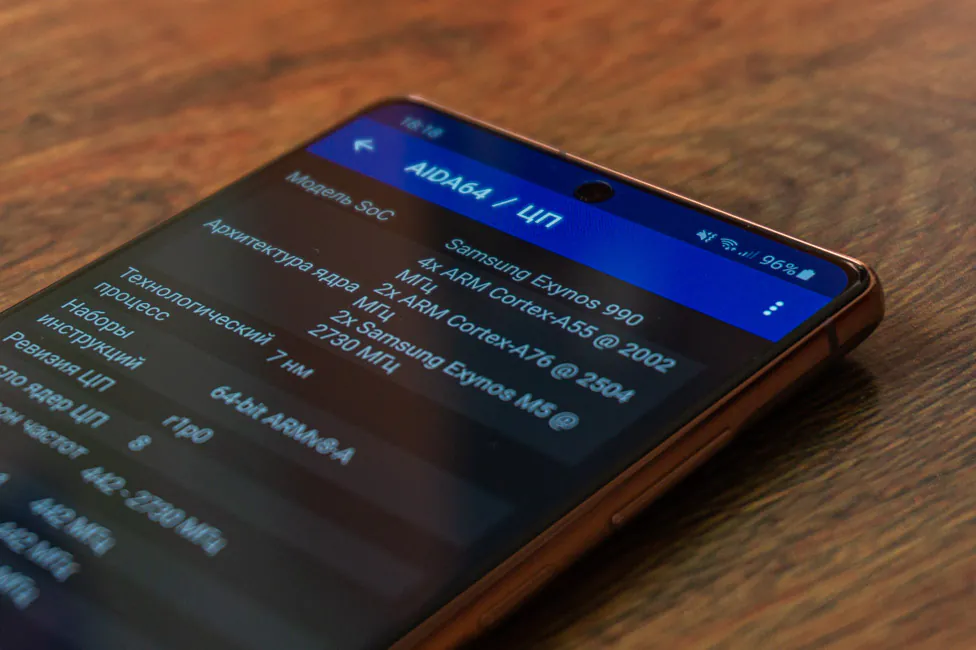
There’s a total of eight cores, divided into three clusters: 2 Mongoose M5 cores with a maximum clock speed of up to 2.73 GHz, 2 more Cortex-A76 cores with a clock speed of up to 2.50 GHz and 4 Cortex-A55 cores with a frequency of up to 2.0 GHz. Mali-G77 MP11, with eleven cores, handles the graphics.
There’s 8 GB of RAM (LPDDR5) and there is only this version, 8/256 GB. Nobody needs more, the smartphone copes well with multitasking and frequent switching between applications.
There’s 256 GB of storage, its type is UFS 3.0. Thankfully, it’s not 128 GB, like the Galaxy S20+. 226.36 GB is available for the user, but it is worth remembering that you cannot expand the storage with memory cards.
Is Exynos 990 in the Note20 somehow better than in the S20+? Judging by the throttling test – yes, and most likely the cooling was improved as well. Let me remind you that the S20+ could lose up to 29% of performance in half an hour, but the Note20 drops only 15%. Not bad at all. Plus, you can look at the performance values measured in GIPS. The average and minimum values indicate that the Exynos 990 in the Note20 is implemented better than in the S20+. At least for this test.
In everyday use everything is fine – same as the S20+. The smartphone launches applications as expected, the shell is responsive and everything works as it should. But games are still experiencing issues and the smartphone runs them fine, but don’t expect rock-solid FPS. Average FPS measurements taken using Gamebench showed figures that seem normal at first glance:
- Call of Duty: Mobile – very high, all effects enabled, Battlefront mode shows an average of 57 FPS; Battle Royale is about 40 FPS
- PUBG Mobile – maximum graphics settings with anti-aliasing and shadows, shows an average of 40 FPS
- Shadowgun Legends – ultra graphics, shows an average of 54 FPS
But if you look at the graphs below, you will see that the frame rate is not consistent, and microfreezes spoil the overall impression. Let me repeat what I said in the review of the Samsung Galaxy S20+: “if you like to play demanding games, then look for the version on the Snapdragon 865”. I could have said 865+, if not for a small problem.

My colleagues have published extremely interesting material. In short, the problem is buried where in an unexpected place. It turned out that Game Launcher, which logically should improve the gaming experience, works in a slightly different way. More precisely, it’s completely backwards. The same can be said about many Samsung smartphones, and if you have a Galaxy with 120 Hz support, then after forcibly disabling Game Launcher in games it is quite possible to get over 60 FPS. Before that the increased frequency did not work. The miracles of optimization.
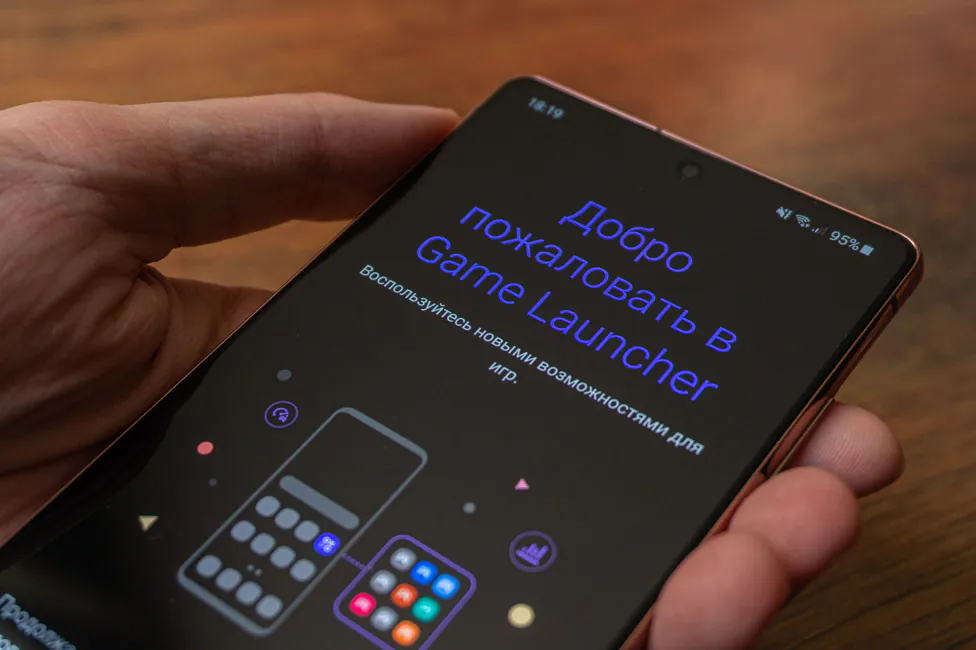
Of course, I couldn’t pass up the opportunity to test this out on the Samsung Galaxy Note20. And yes, Samsung programmers urgently need to fix this game optimizer. Just look at the graphs below after 1:40. Significant FPS drops actually decreased, and the average FPS, although not much, were increased. Even the controls in games improved.
Samsung Galaxy Note20 cameras
The main camera modules, as I already noted, are actually from the Galaxy S20/S20+, but without the TOF sensor. These are only three cameras:
- 12 MP, f/1.8, 26mm (wide), 1/1.76″, 1.8µm, Dual Pixel PDAF, OIS
- 64 MP, f/2.0, 27mm (telephoto), 1/1.72″, 0.8µm, PDAF, OIS, 3x hybrid zoom
- 12 MP, f/2.2, 120˚, 13mm (ultrawide), 1/2.55″, 1.4µm
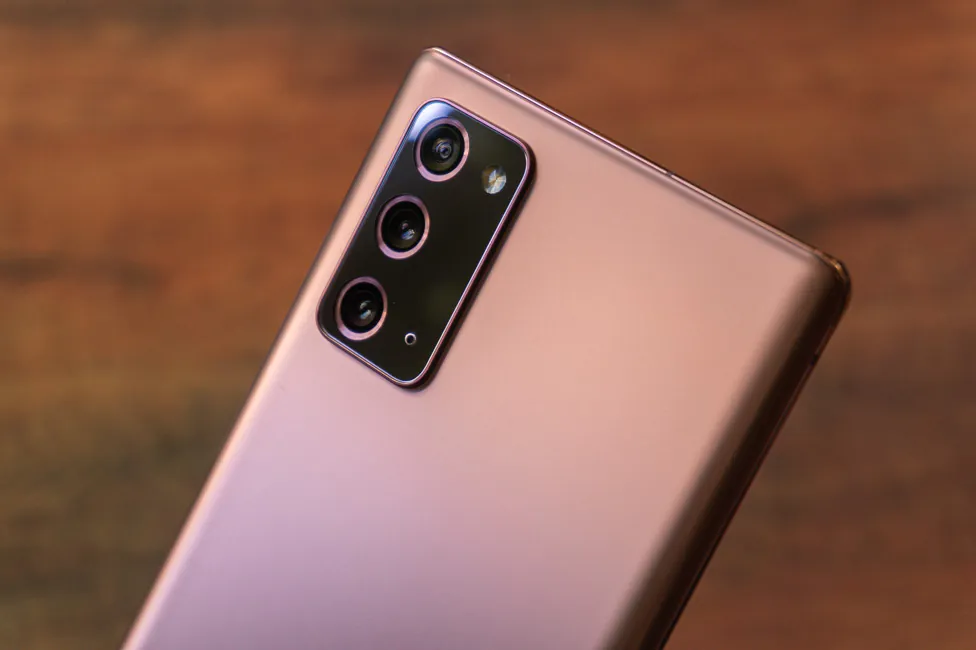
The main module makes perfectly good pictures during the day with good detail and wide dynamic range. True, the color is often unnatural (thank the build-in optimizer), and in order to get a more natural-colored photo it is better to turn off the scene detector. In medium light the default mode works fine, but in the dark it is better to resort to night mode. It helps a lot, but it’s not ideal, because sometimes artifacts appear. I would not call the results particularly outstanding. The S20+ situation repeats itself.
PHOTOS IN FULL RESOLUTION FROM THE MAIN CAMERA
And don’t forget about the pseudo telephoto, which almost does not differ from the main module, but due to the higher resolution, the images will be much more detailed. So if you want to squeeze out as much detail as possible from a smartphone, you can resort to this method by selecting the 3:4 format with 64 megapixels.
The ultra-wide is good enough during the day, but towards the evening or just in a room with an average level of illumination it is losing ground in details. There are not enough of them, the module also does not have autofocus, which makes it impossible for the user to shoot objects close up with an unusual perspective. Night mode works as well, but it doesn’t do miracles, but in difficult scenes it does help.
FULL RESOLUTION PHOTO FROM ULTRA-WIDE ANGLE LENS
The telephoto works out manly due to the software and its physical resolution. By default, this is a 3x zoom, but switching occurs even with a 2x zoom. Photos have high quality only if information is actually taken from this multi-megapixel module. That means when shooting in good lighting. Otherwise, if the software considers that there is little light, digital zoom will be applied from the main 12 megapixel sensor. Then the quality will be mediocre.
PHOTOS IN FULL RESOLUTION FROM TELEPHOTO LENS
With filming video, things are absolutely the same as in the case of the S20+. The maximum possible resolution is 8K at 24 fps. In this mode, there is no stabilization, there is a strong rolling shutter effect, and 24 fps does not always look good. In general, the mode is more likely for static shooting with a tripod and that’s it. 4K at 60 FPS offers stabilization, smoothness and excellent quality. On the ultrawide or telephoto you can shoot a maximum of 4K at 30 FPS.
The front-facing camera does not differ in its characteristics from the current flagships of the S-series: 10 megapixels, f/2.2, 1/3.2″, 1.22µm, Dual Pixel PDAF. I can’t say anything new about it – it’s just one of the best selfie cameras around. You get video in 4K at 30 or 60 fps with stabilization, but autofocus works only when recording at 30 FPS.
The camera app contains all the necessary modes and settings: multi-shot, photography, video recording, professional (manual) mode, panorama, food, night, live focus, live focus video, professional video, slow motion, and hyperlapse.
Unlocking methods
The smartphone has an in-screen ultrasonic fingerprint scanner. It works well, fast enough and quite accurate. Over the entire testing period of the Galaxy Note20, the scanner misfired only a couple of times, and even then, most likely due to inaccurate positioning of the finger.
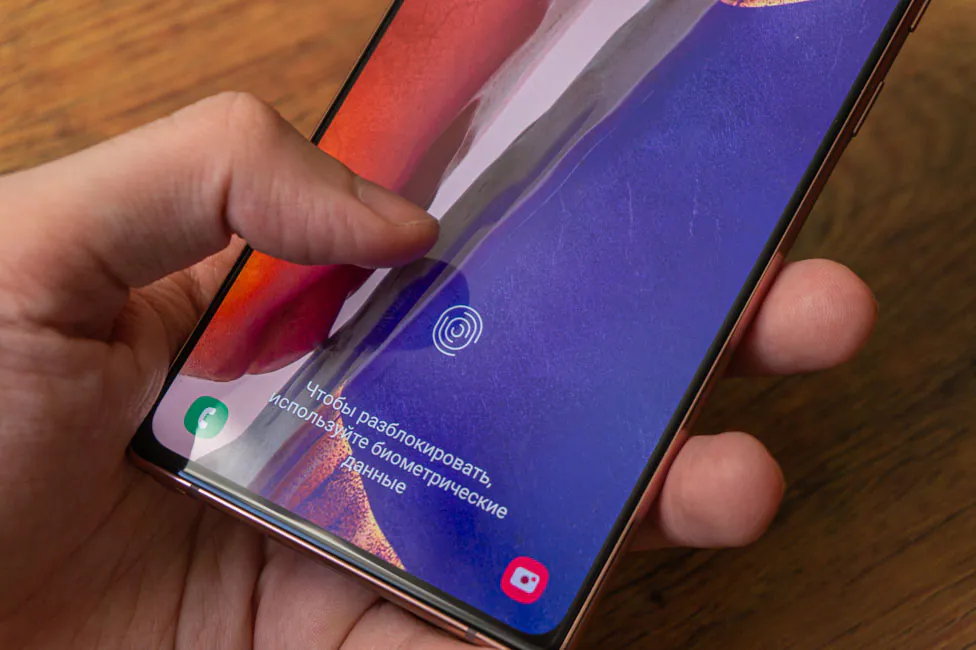
Unlocking with a face, in turn, is also relatively fast, although not to say that it is lightning fast. With okay light around and accelerated recognition enabled, it works fine.
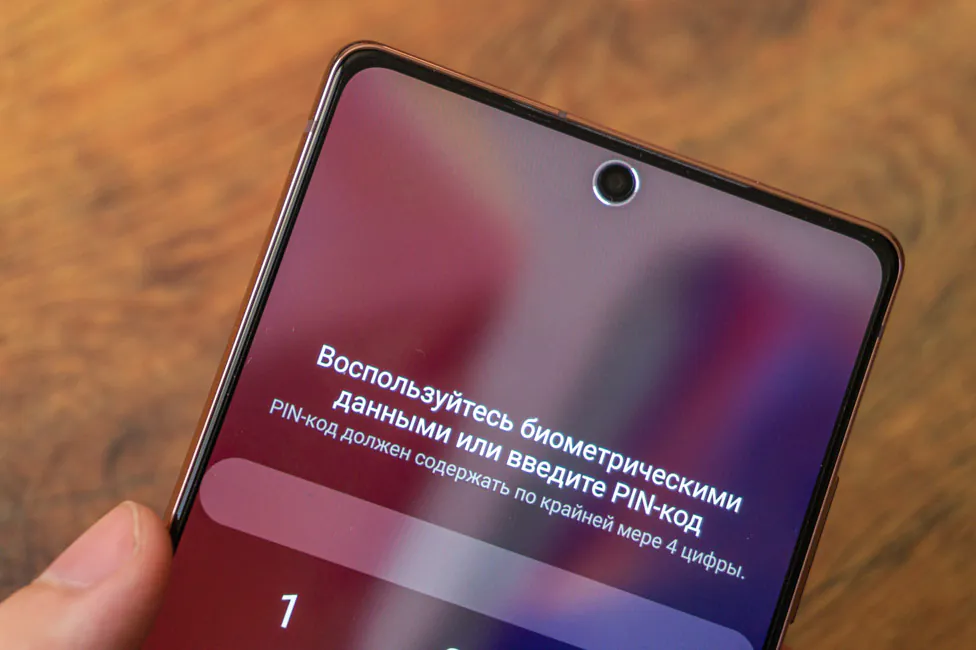
It is also possible to increase in the brightness of the display in the dark for additional illumination of the face, add an alternative angle to improve accuracy.
Samsung Galaxy Note20 battery life
The Samsung Galaxy Note20 has a 4,300mAh battery, which is slightly less than the Galaxy S20+. Nevertheless, it holds the charge just as good, and due to the lack of 120 Hz it is even better. In a normal mode of use, the smartphone has enough for a day with an average of 7-7.5 hours of screen.
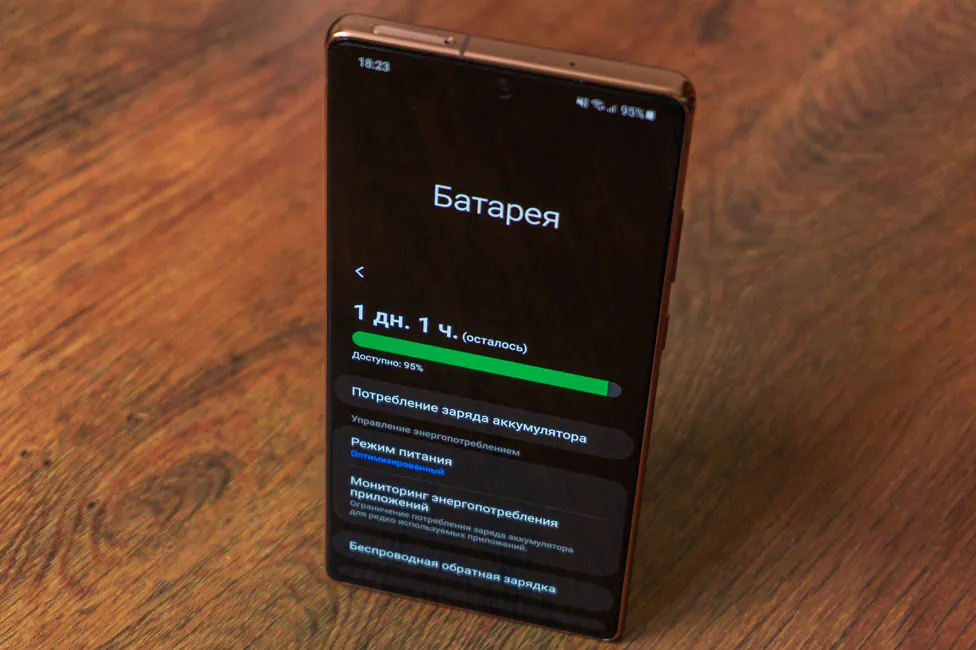
If you load it with any demanding tasks, then, of course, it will lose power faster. In the PCMark Work 2.0 test, at maximum screen brightness the phone lasted for 8 hours and 25 minutes, which is very, very good. But overall, the battery life is fine.
Naturally, the device supports fast 25W charging, wireless with up to 15W, and can also recharge other devices wirelessly. Reverse charging power is 4.5W, for accessories like TWS headsets this is quite enough.
Sound and communication
The sound quality during a call is excellent. It also helps the multimedia speaker to fulfill its function, forming a stereo pair. The overall sound is excellent, the volume margin is decent, there is no distortion. It’s more than enough for listening to music, watching movies or playing games. But it still falls short of the Xiaomi Mi 10 Pro. The vibration is just as pleasant as in the S20+, which is one of the best Android devices out there.
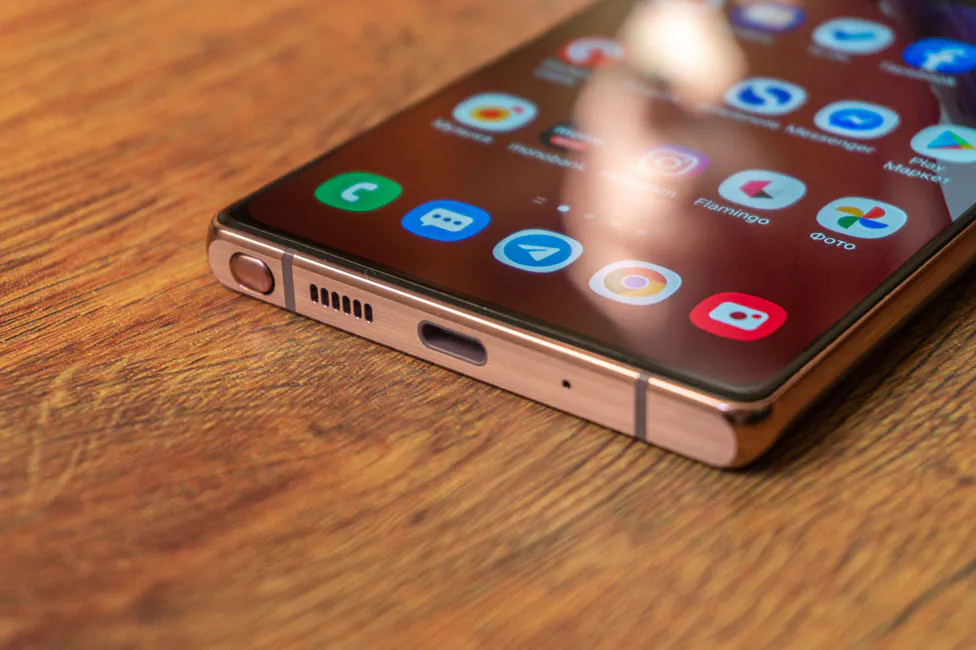
Everything is fine with the headphones, both in quality and in the available maximum volume level. True, for wired headphones with a 3.5 mm plug you will have to look for an adapter to USB-C, because it is not included in the box. But there are Type-C AKG headphones on sale. Samsung, too, has more than one TWS headset in its arsenal, so I think there should be no problems with the choice of headphones. In the sound settings, there are Dolby Atmos presets: auto, movie, music and voice. Also separately Dolby Atmos for games. Equalizer and UHQ upscaler are included. For wireless headsets, all effects are applicable except the last one.
Everything’s alright with communication modules, almost everything is here: Wi-Fi 6, Bluetooth 5.0 (A2DP, LE), GPS (A-GPS, GLONASS, BDS, GALILEO) and NFC. Only 5G is missing.
Firmware and software
The gadget runs on the Android 10 operating system with the proprietary One UI shell (2.5). There are almost no differences from version 2.1, except for some cosmetic changes.
The most interesting feature is the updated Samsung DeX. Now you can connect your smartphone to the TV wirelessly. It is possible to display different applications on the external screen and on the display of the smartphone itself, but if this is not needed, the smartphone can transform into a trackpad. This option has got support for new three-finger gestures.
S Pen stylus
What makes Note smartphones usually stand out is the S-Pen. This is the main feature of the smartphone and, in fact, no other manufacturer offers an alternative. So let’s see what you can do with it.
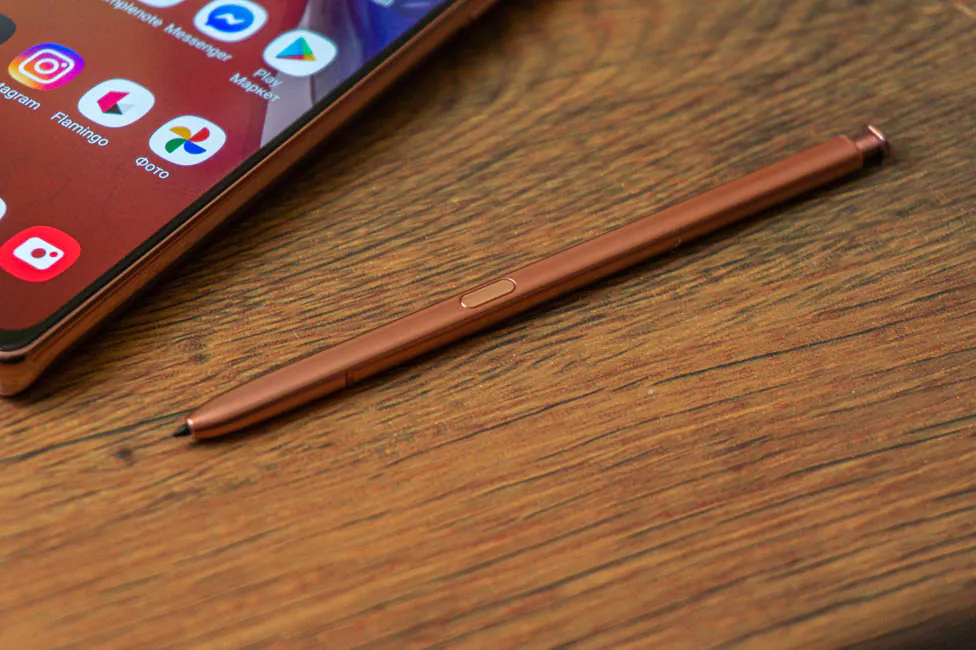
To begin with, the stylus itself has changed little in appearance compared to the previous generation. Inside, too, everything remained as before. This is a delay of 26 ms, its own battery, a connection with a smartphone via Bluetooth, as well as a built-in accelerometer and gyroscope.
With the S Pen, you can take handwritten notes, conveniently highlight objects on the screen, take screenshots with notes, or copy text to the clipboard. There are AR sketches and live messages, as well as a built-in translator – just hover the stylus cursor over an unfamiliar word and its translation will appear in a small window. The PENUP utility contains many templates for coloring.
There’s a remote control ability. You can choose the action when you hold down the button on the stylus for a long time – this is either launching an application or executing a context command from the S Pen. The same can be assigned to special gestures: hold down the button and use the stylus. Each of the 5 gestures can be assigned its own function.
The built-in apps also have a number of gestires. These include a camera, gallery, browser, voice recorder, clock and other pre-installed software. Again, actions can be defined in advance, be it pressing a button or various gestures in the air. There are also common gestures for third-party multimedia applications.
Verdict
The Samsung Galaxy Note20 is undoubtedly the most controversial new device shown during August Galaxy Unpacked. The company has strongly distinguished between Note20 and Note20 Ultra, making significant simplifications of the screen. Therefore, even if we talk about internal competition, it will be difficult for this smartphone to compete with the S20 series.
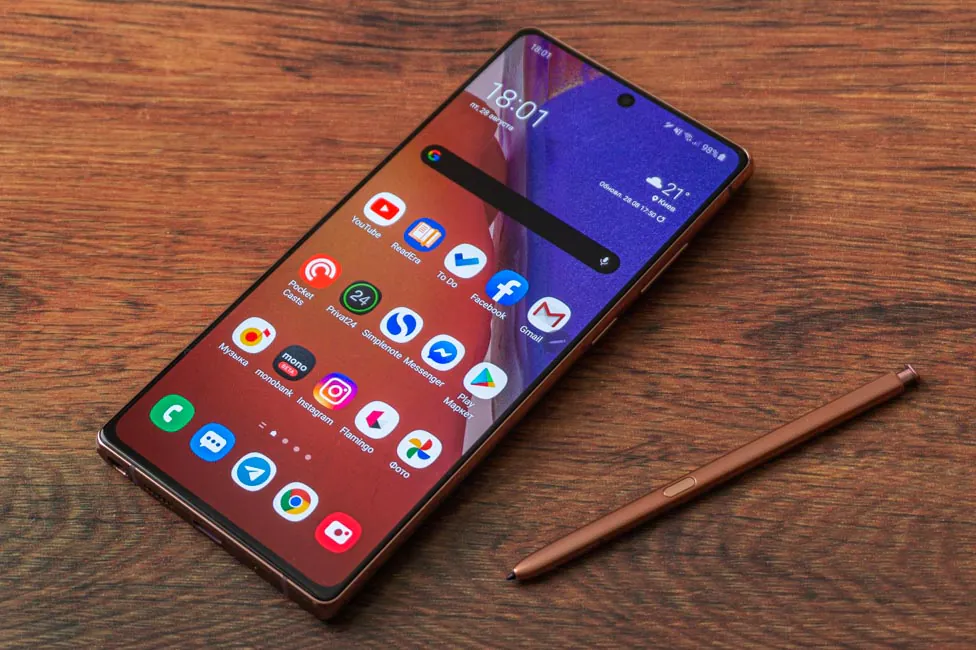
Note20 has one serious advantage – the stylus. If you need it, great, and if not… I see no other reason to choose this, and not to the cheaper S20+, for example.
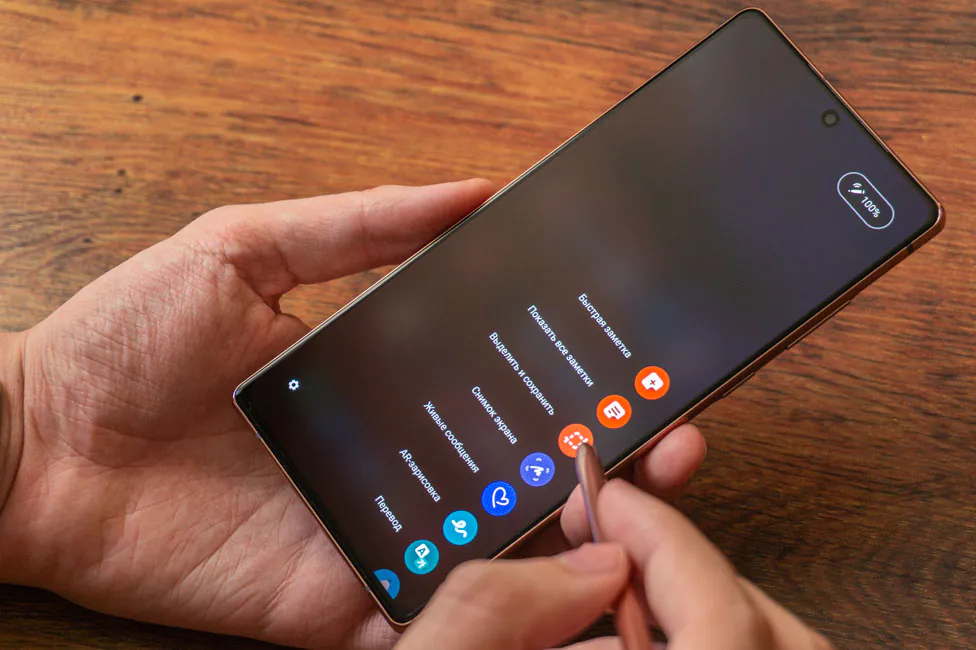
The design is more original, but the materials? The battery life is better, but it’s understandable why. In S series you can also select a resolution similar to Note and the refresh rate of the screen. So it’s very difficult to say who needs this exact model. Maybe people who don’t want to pay extra for the Note20 Ultra, but still want a stylus and up-to-date hardware?
Subscribe to our accounts:


